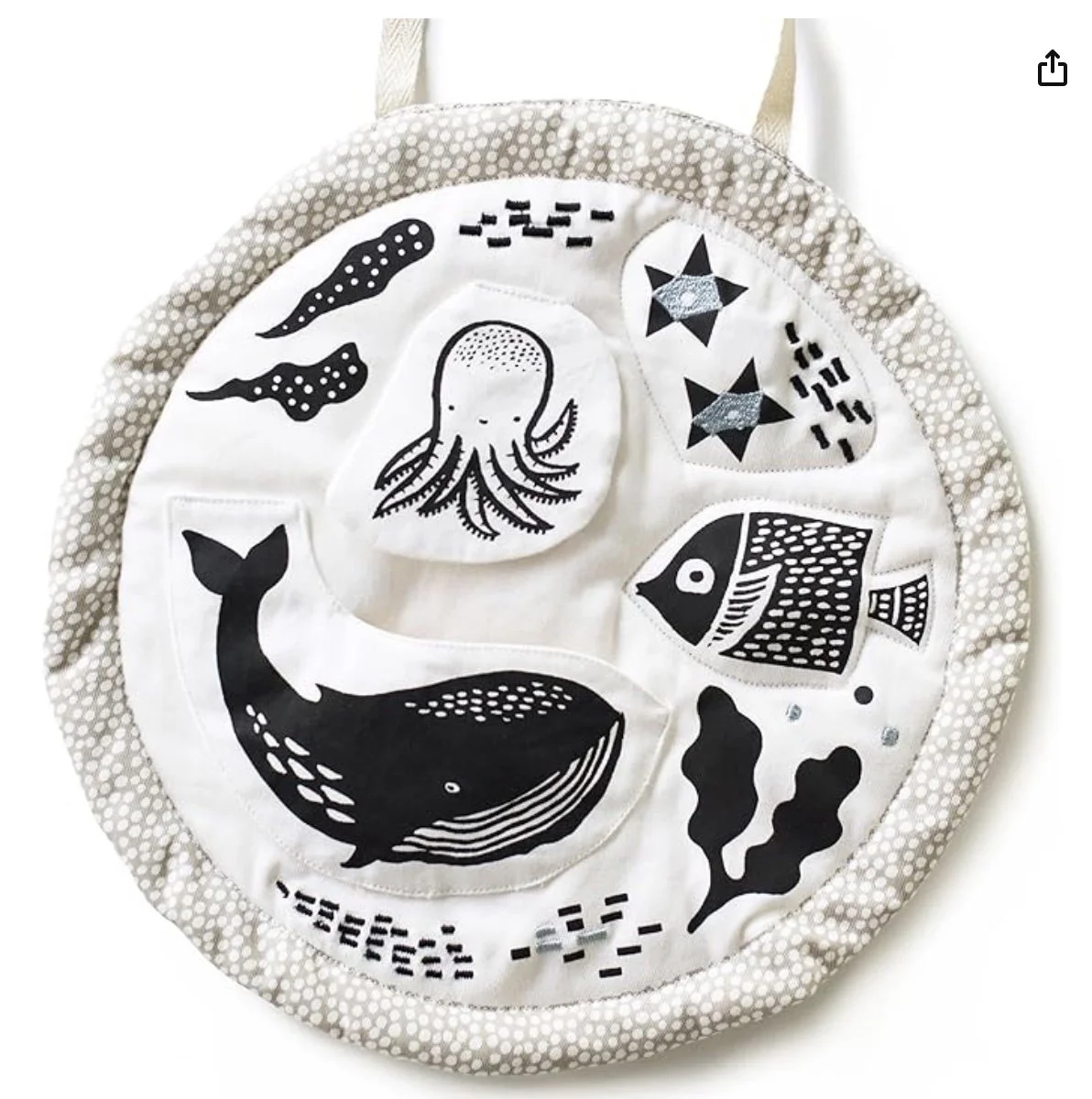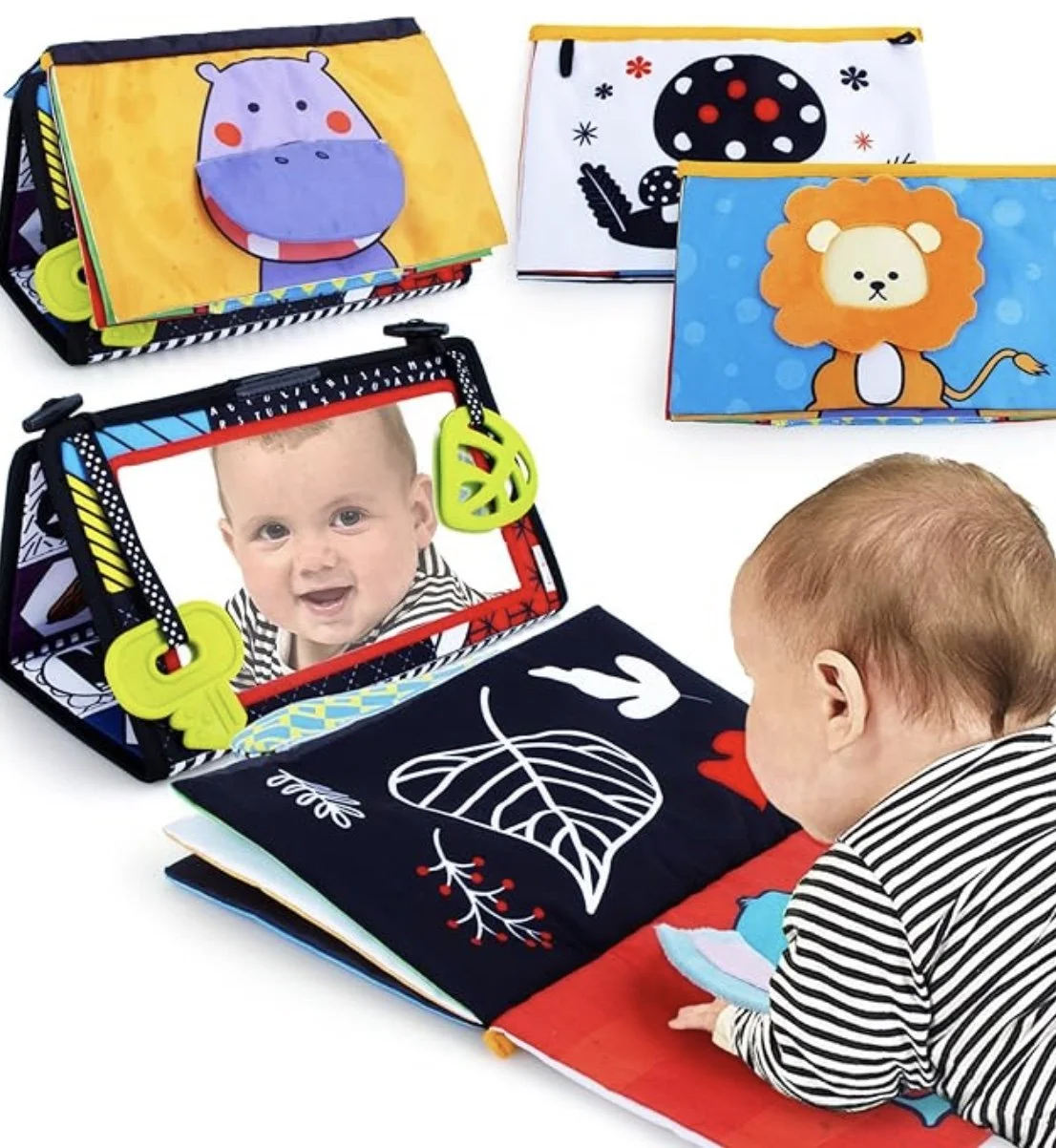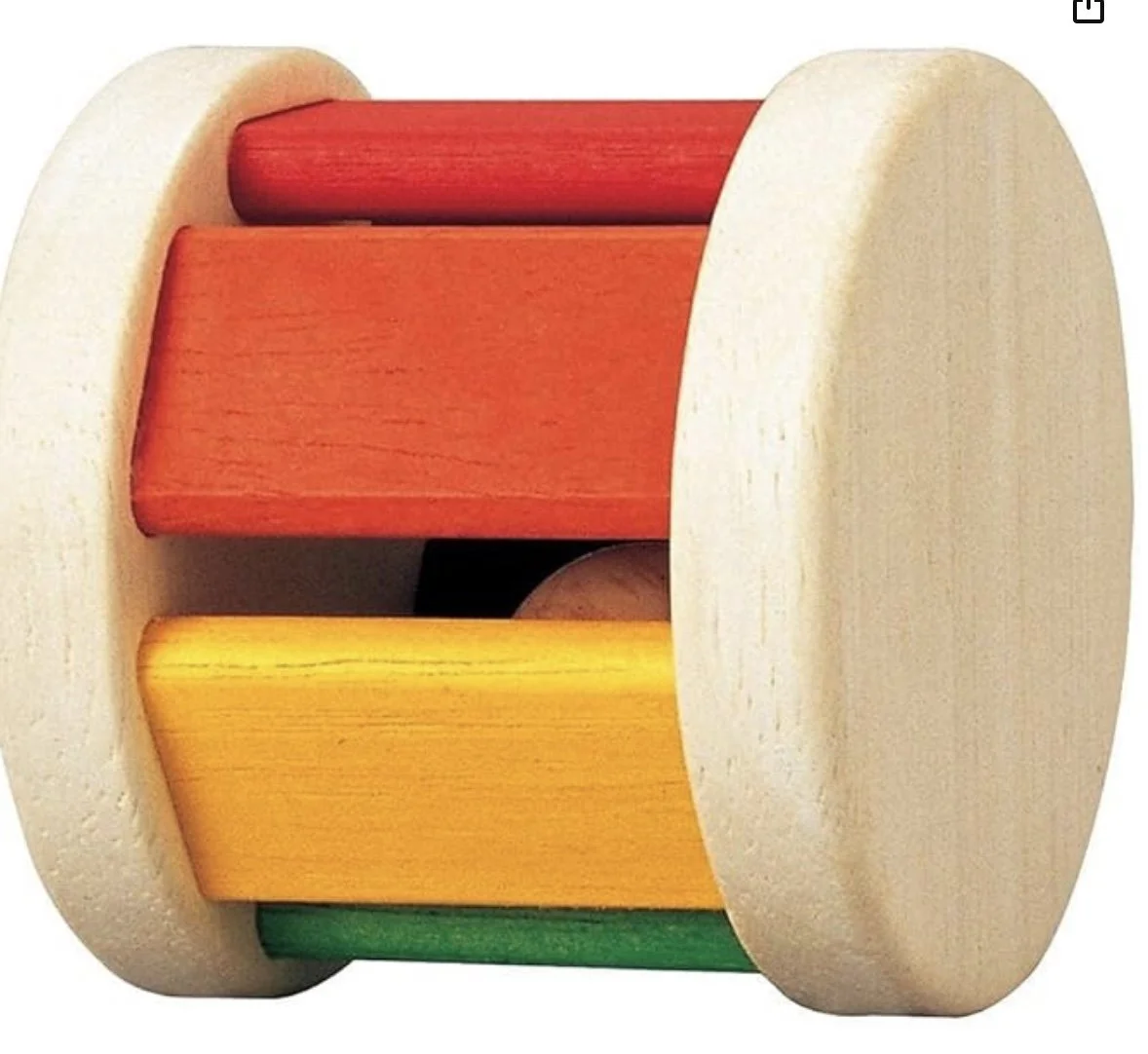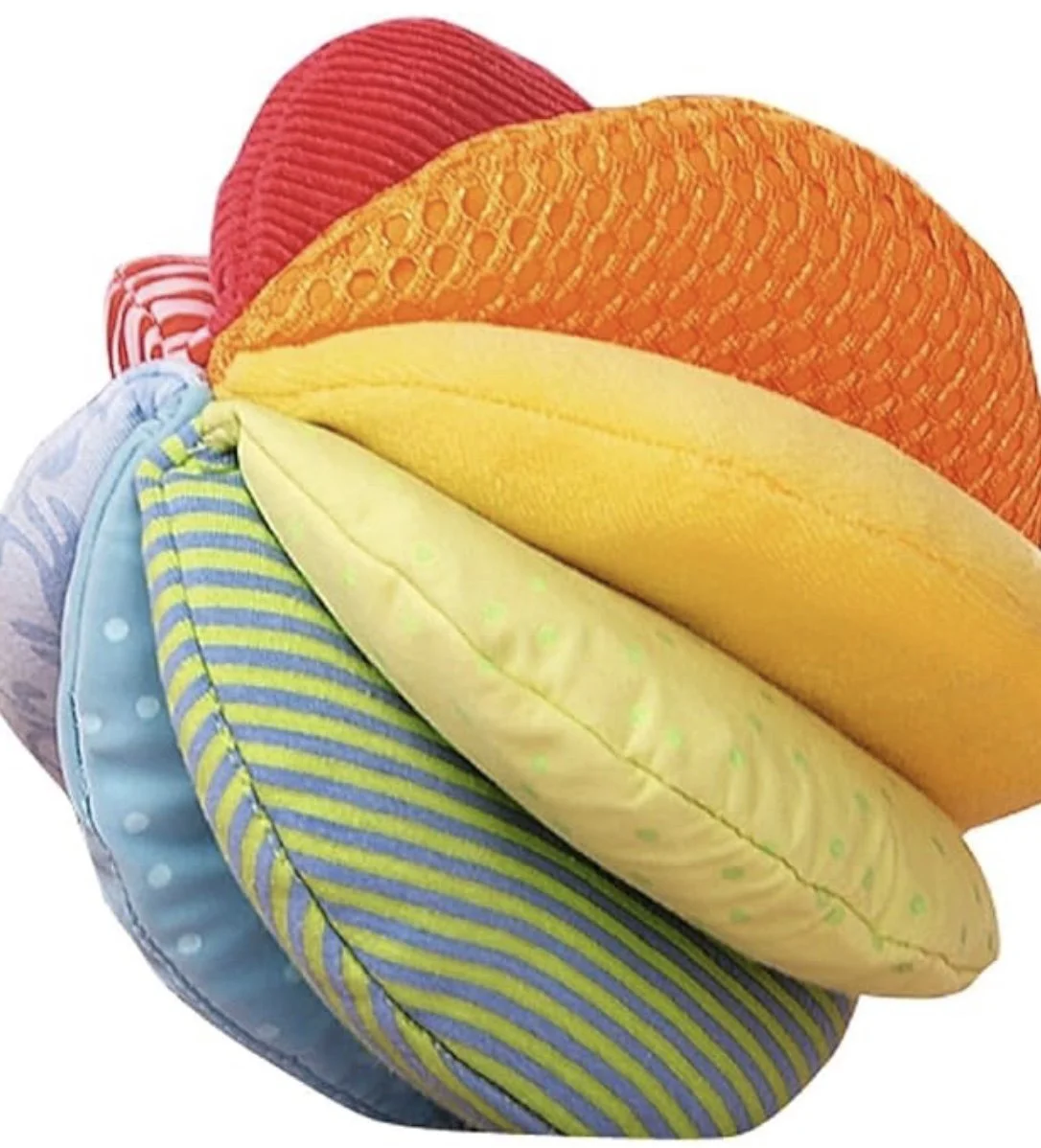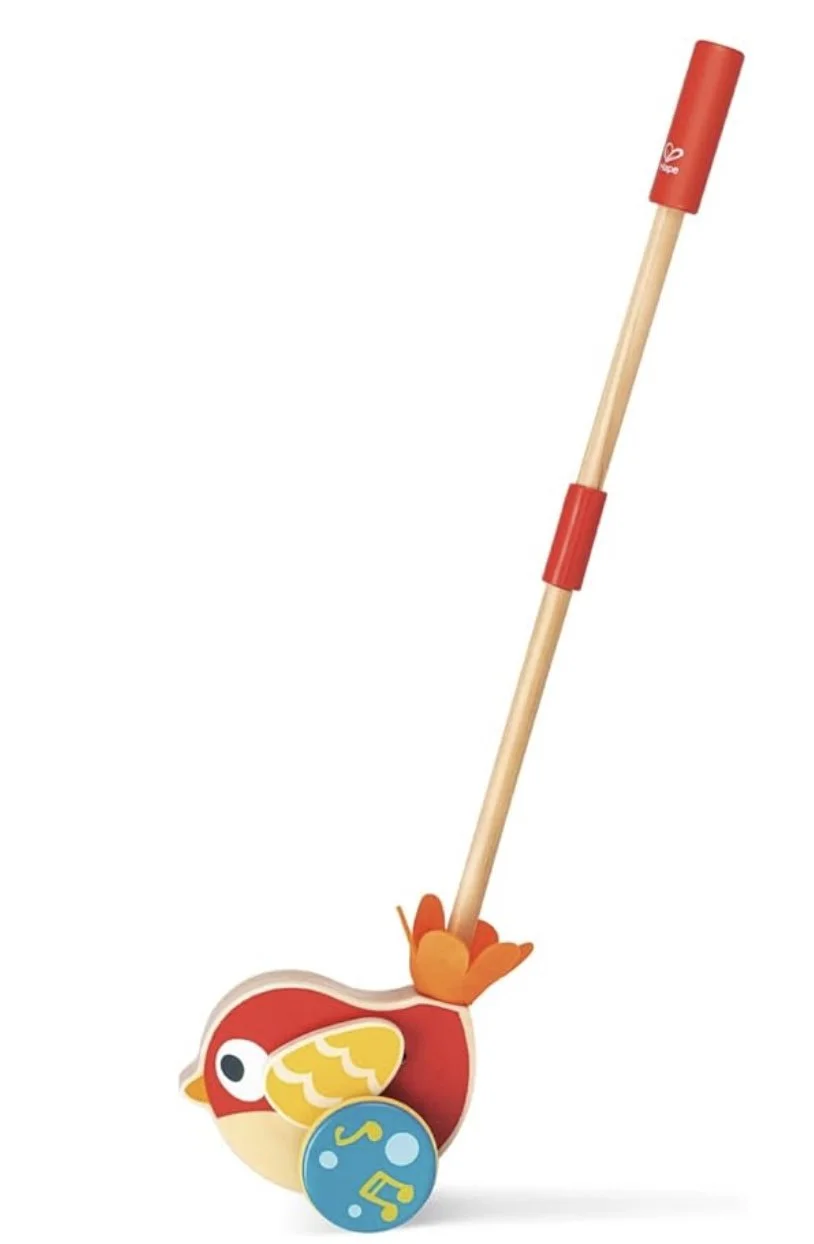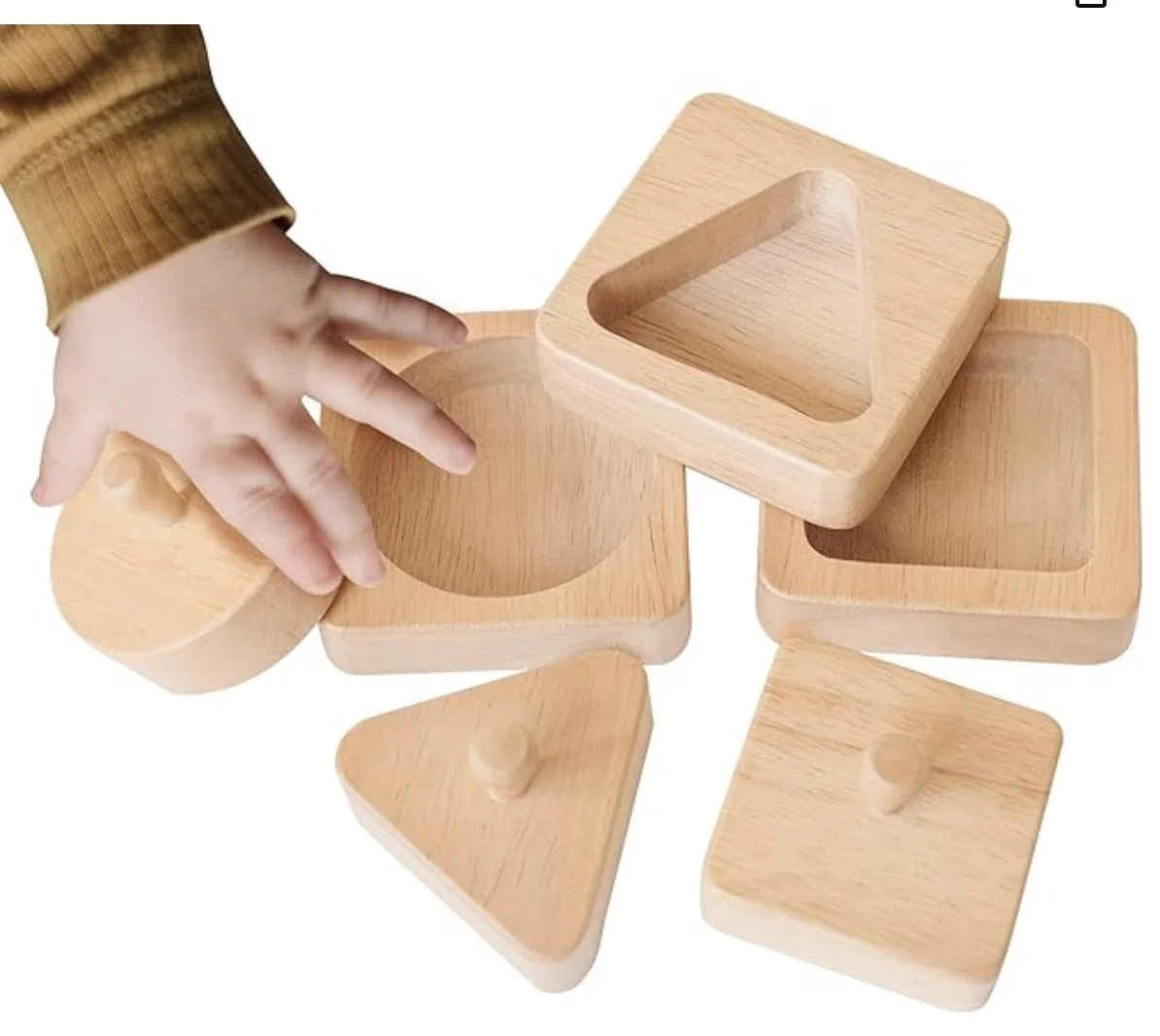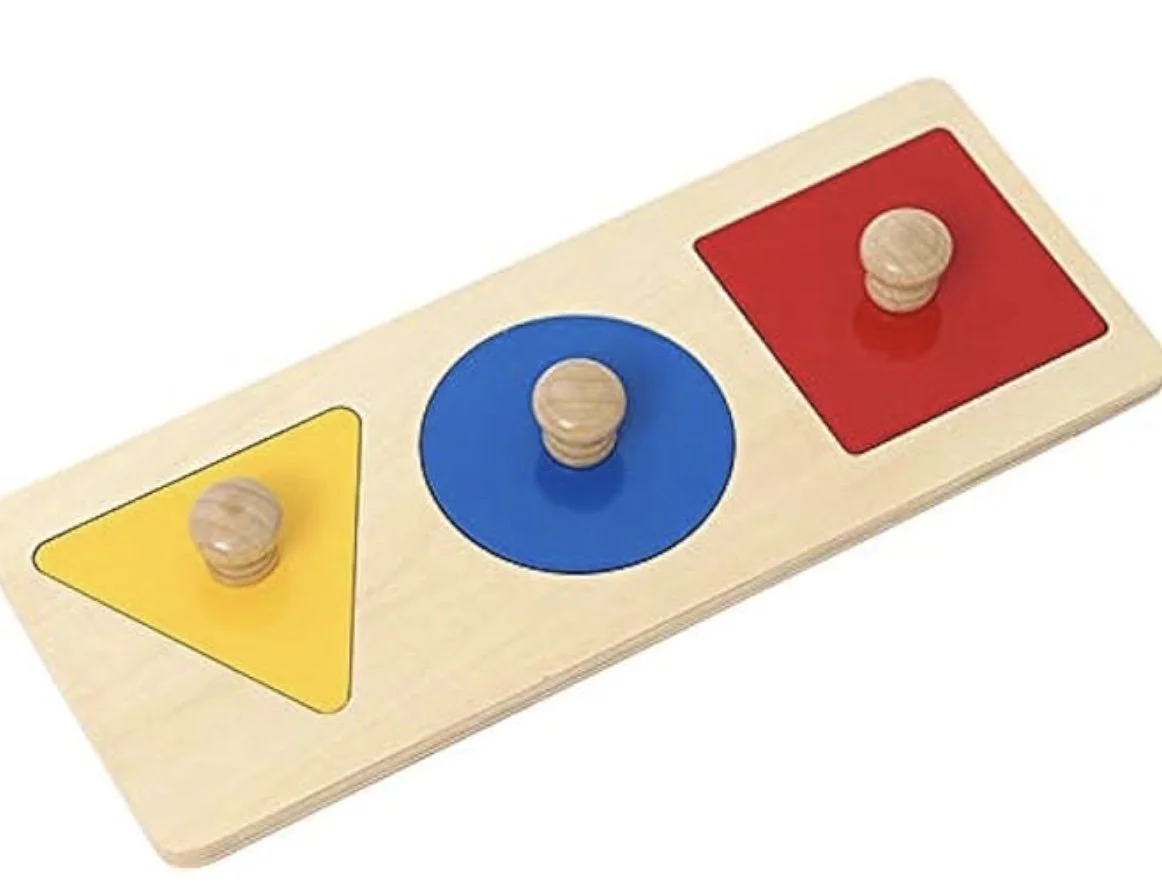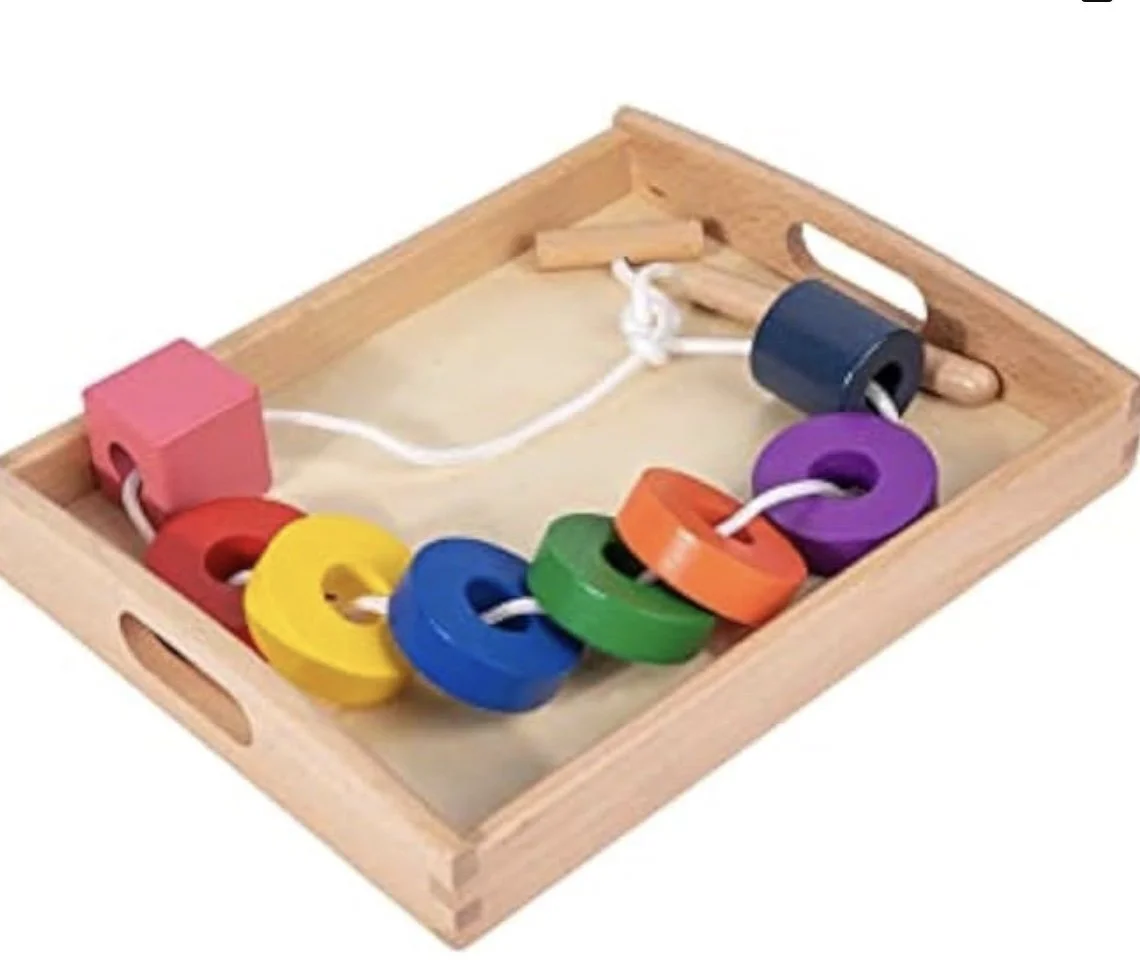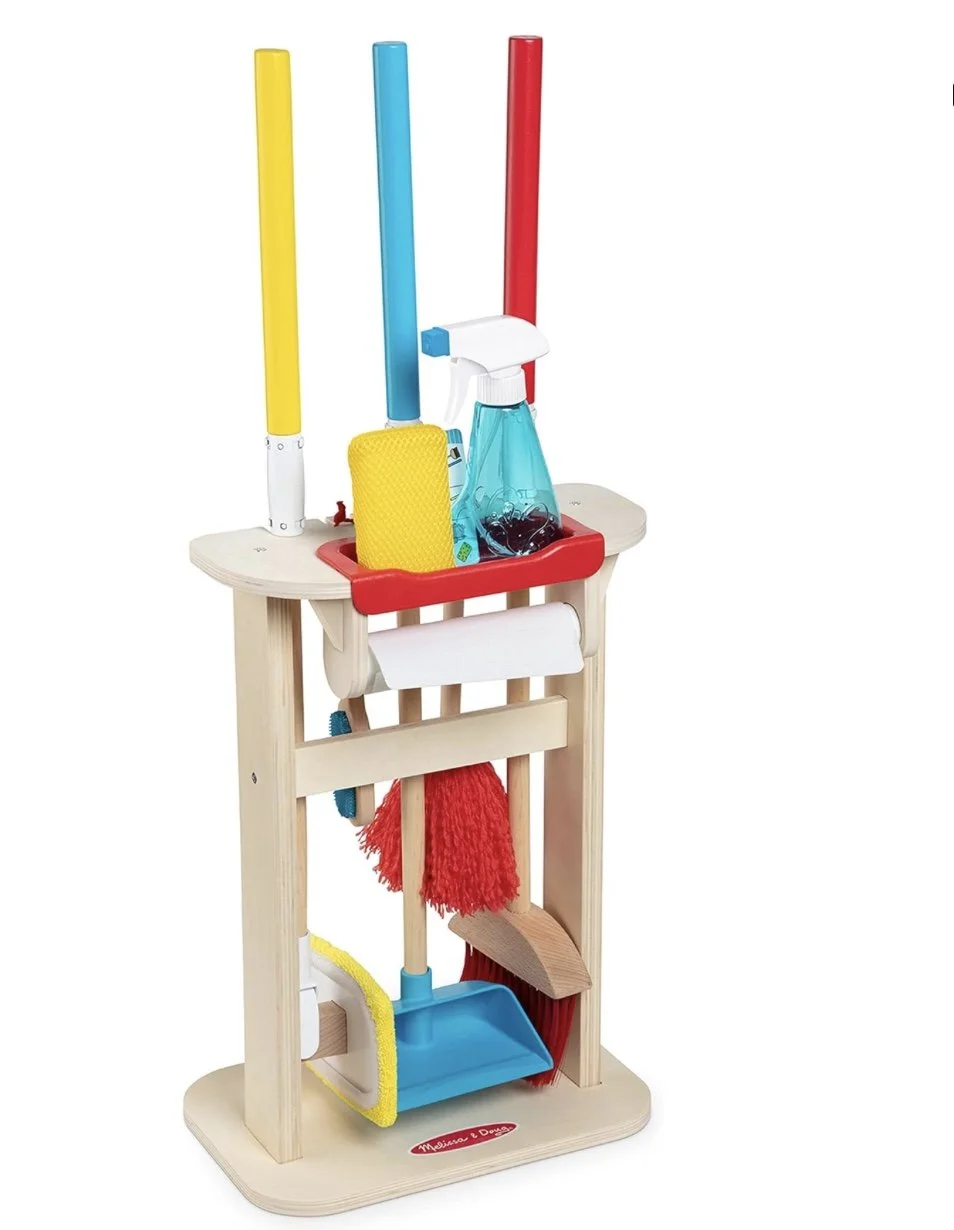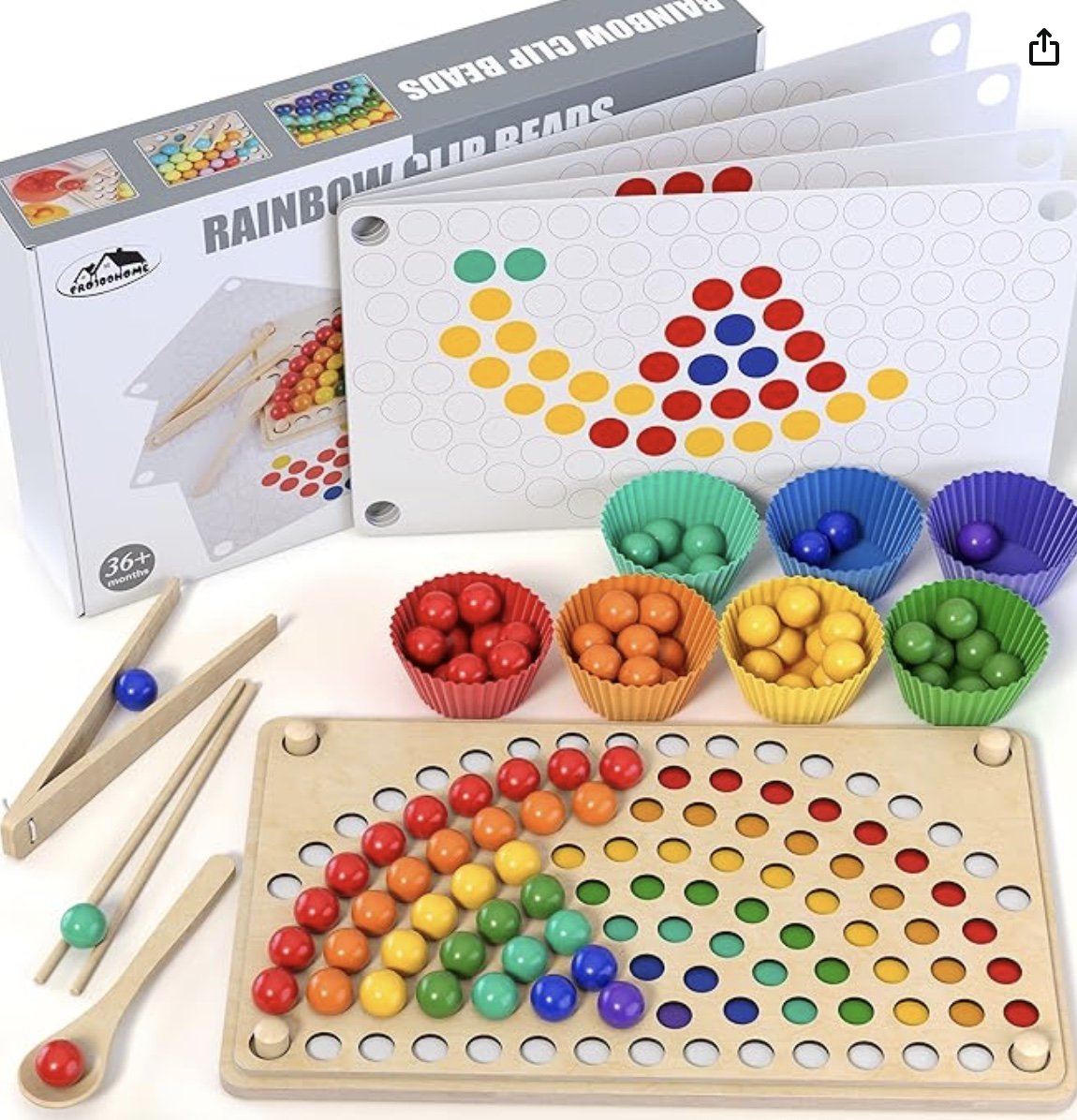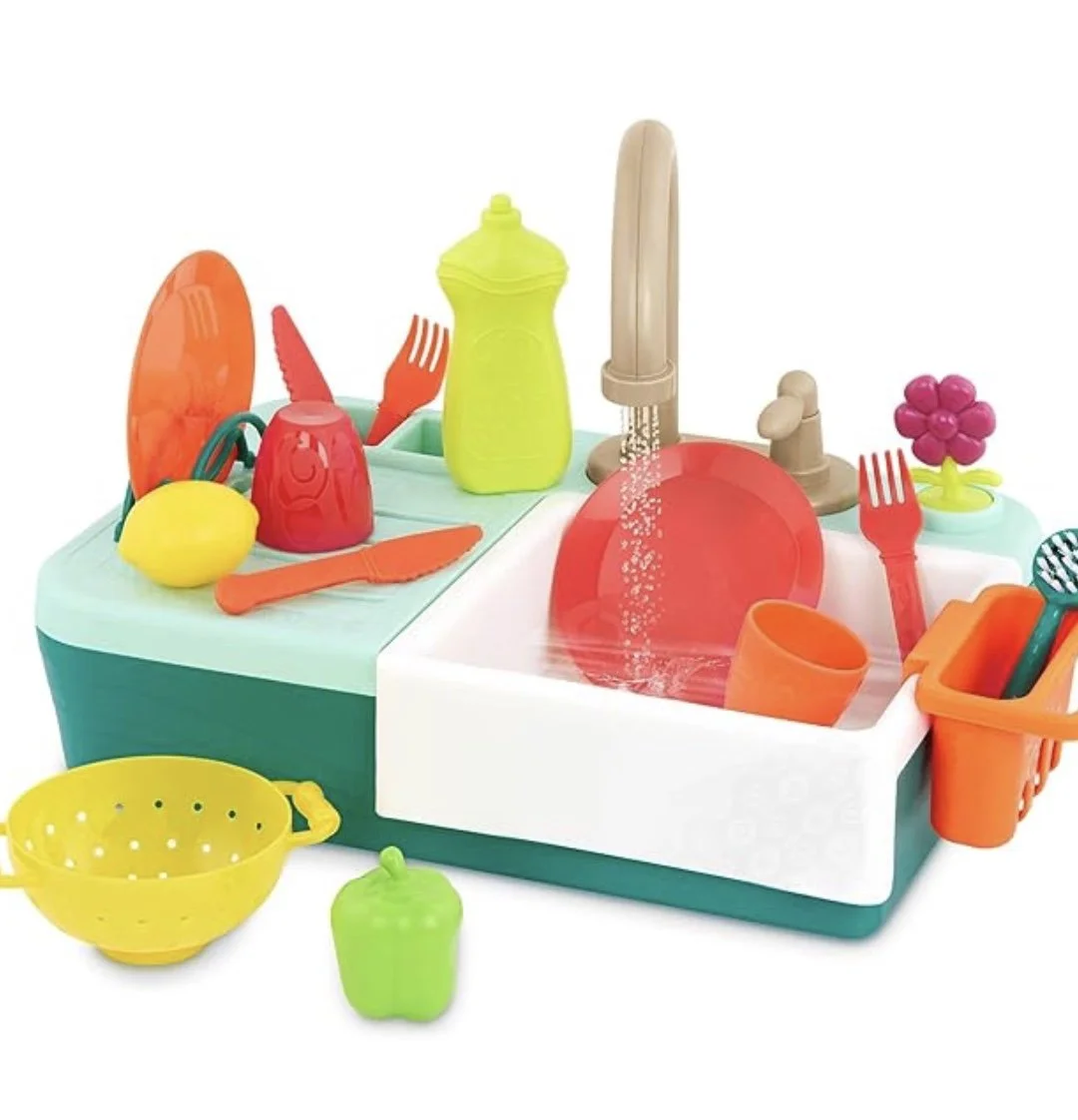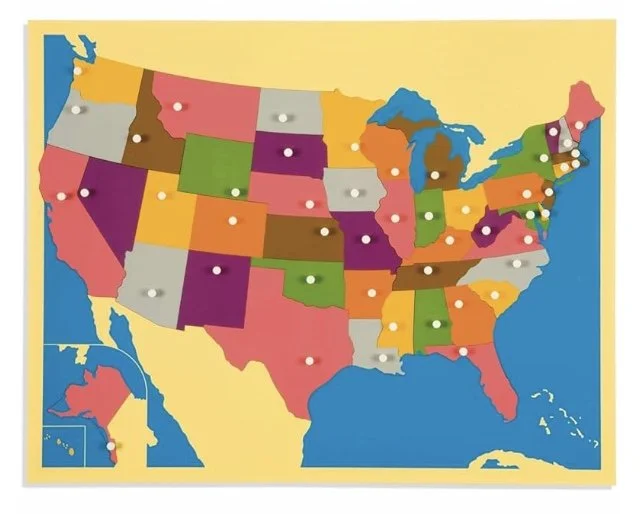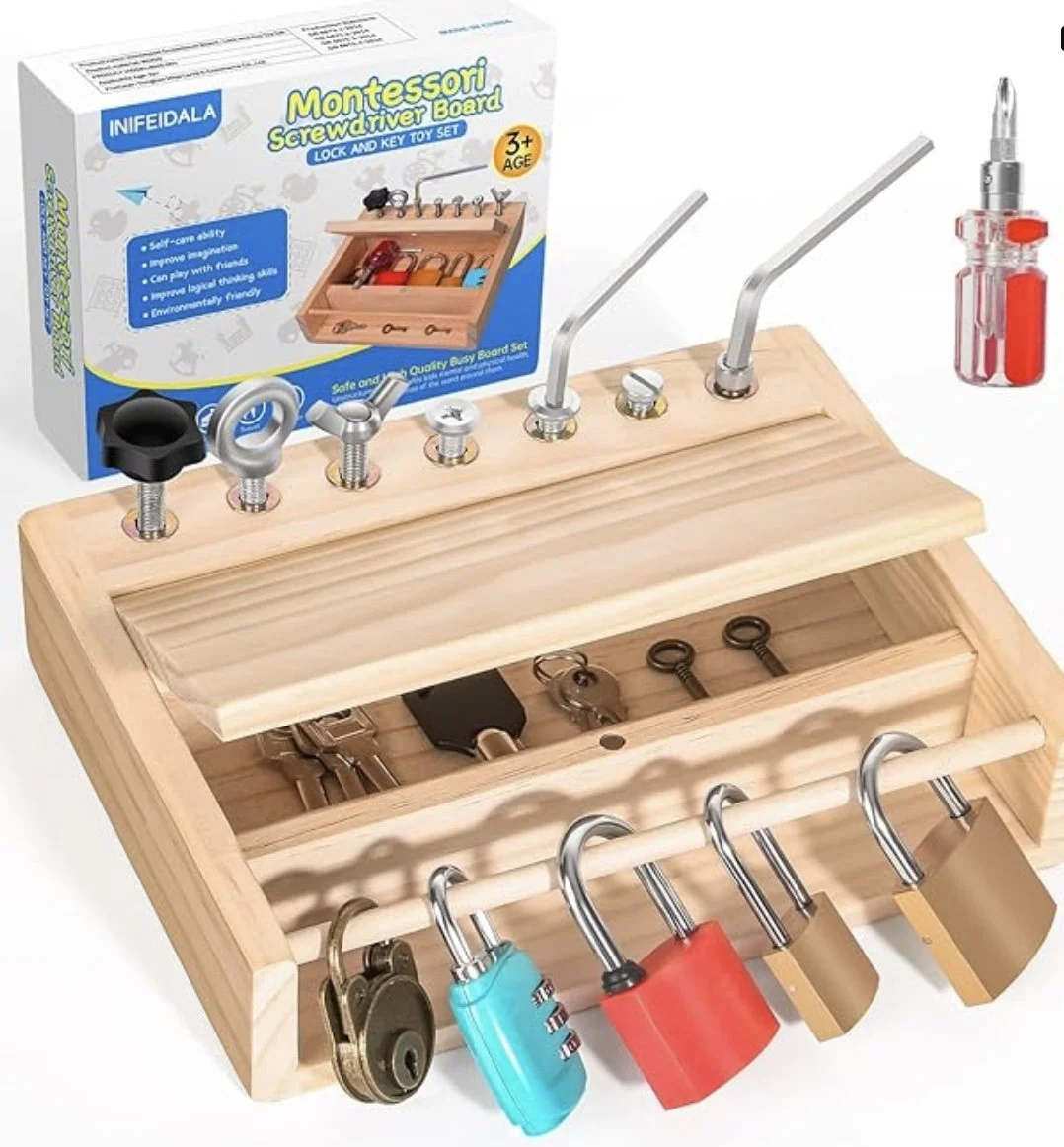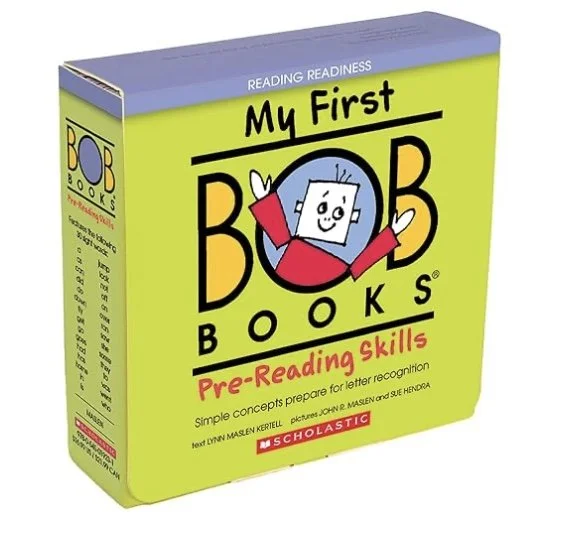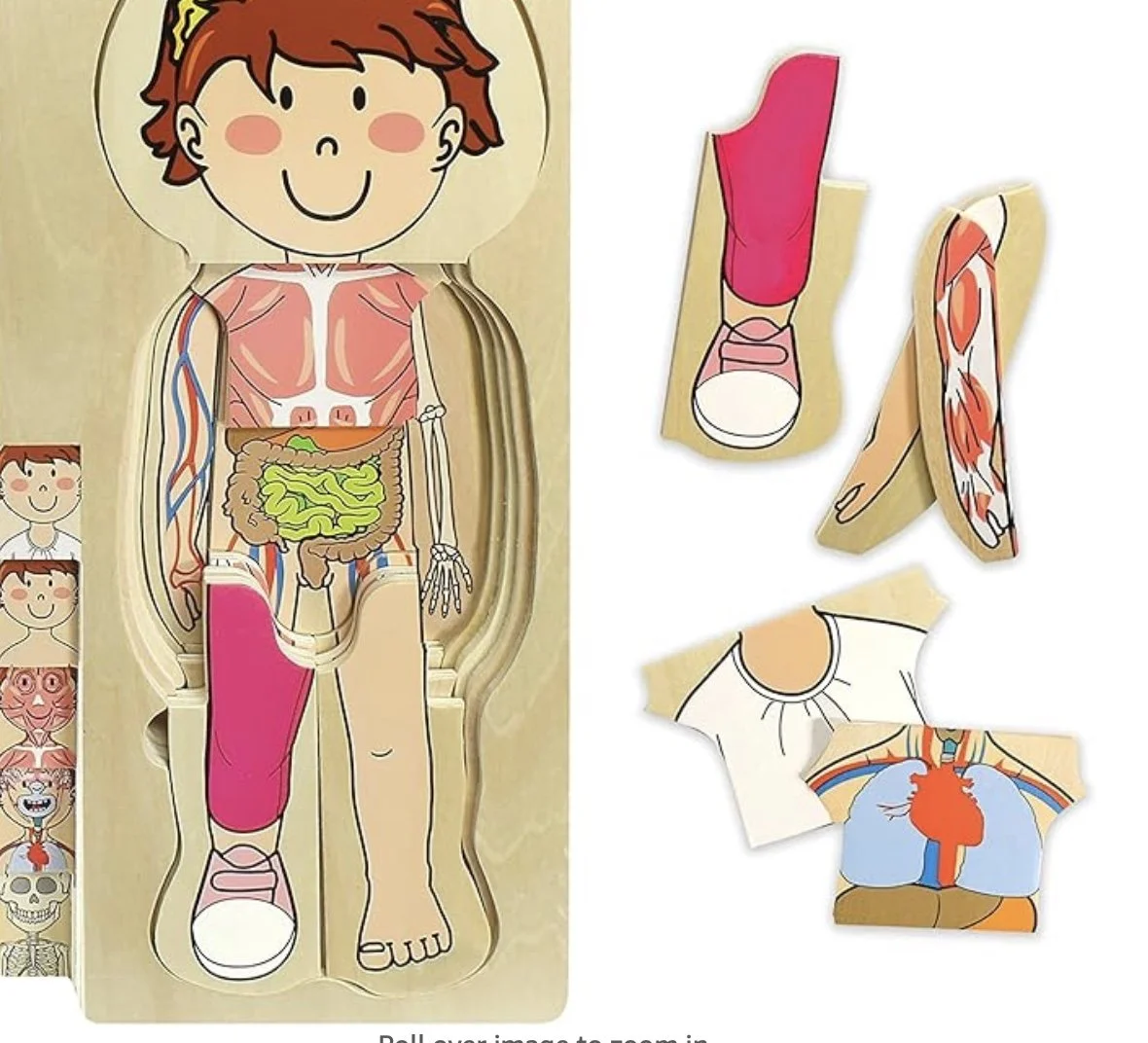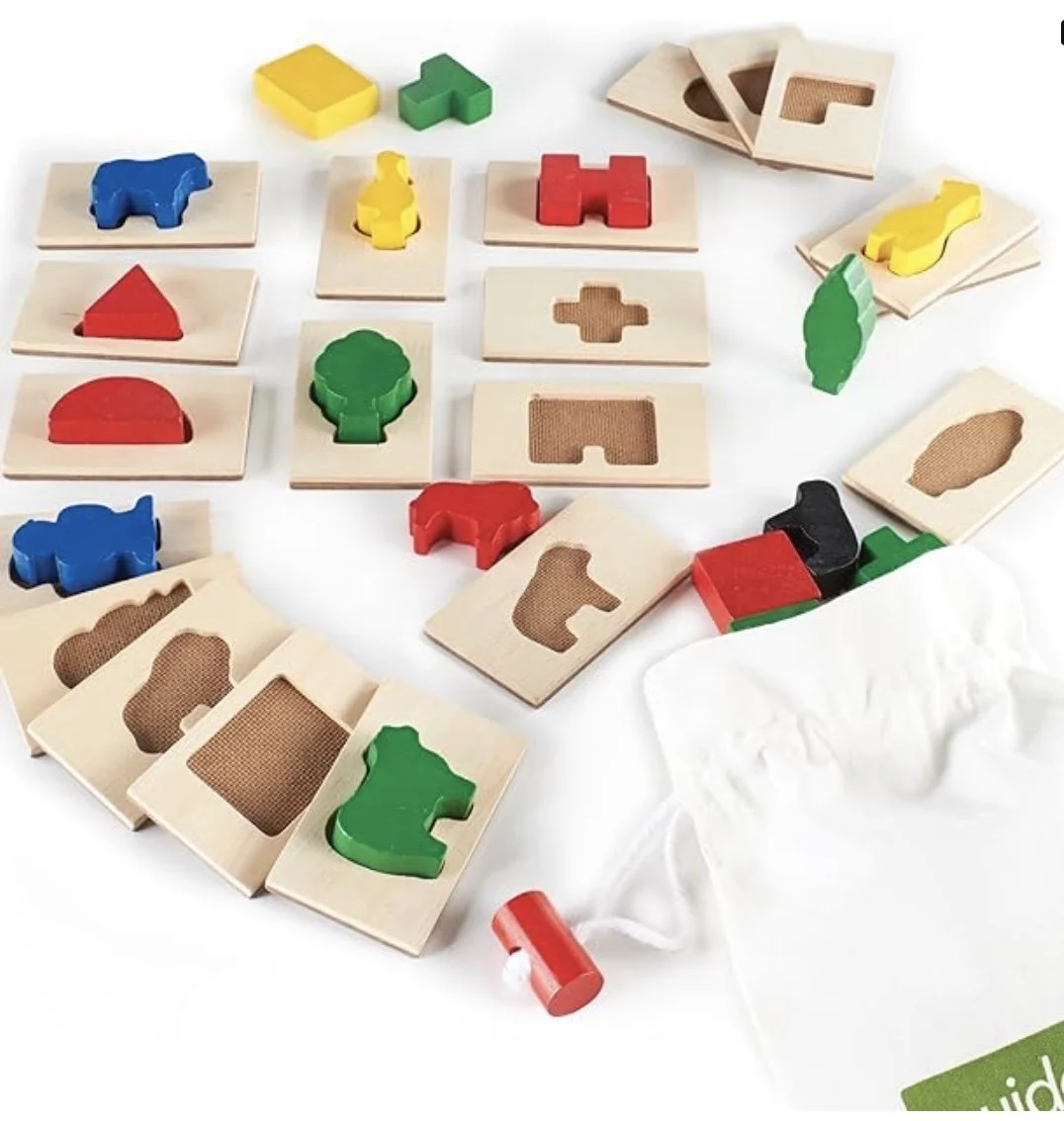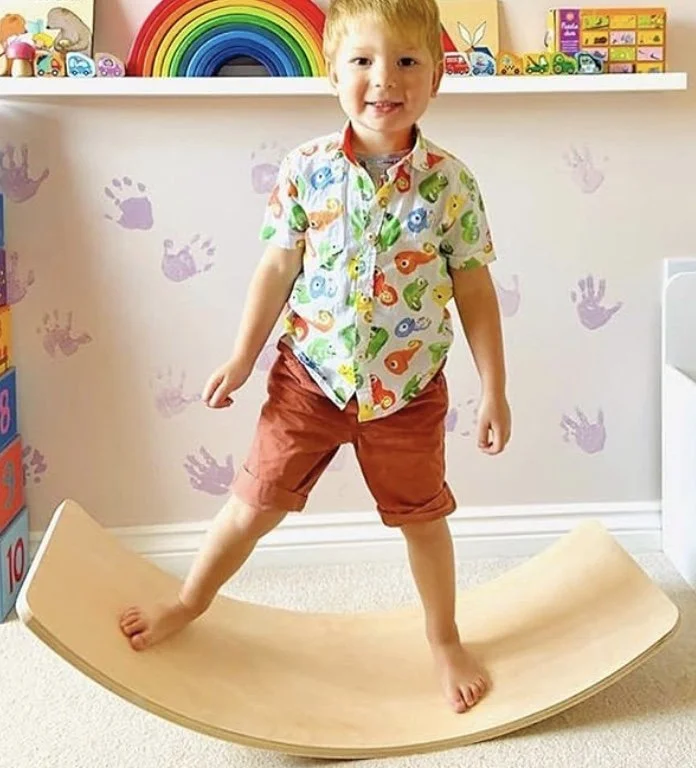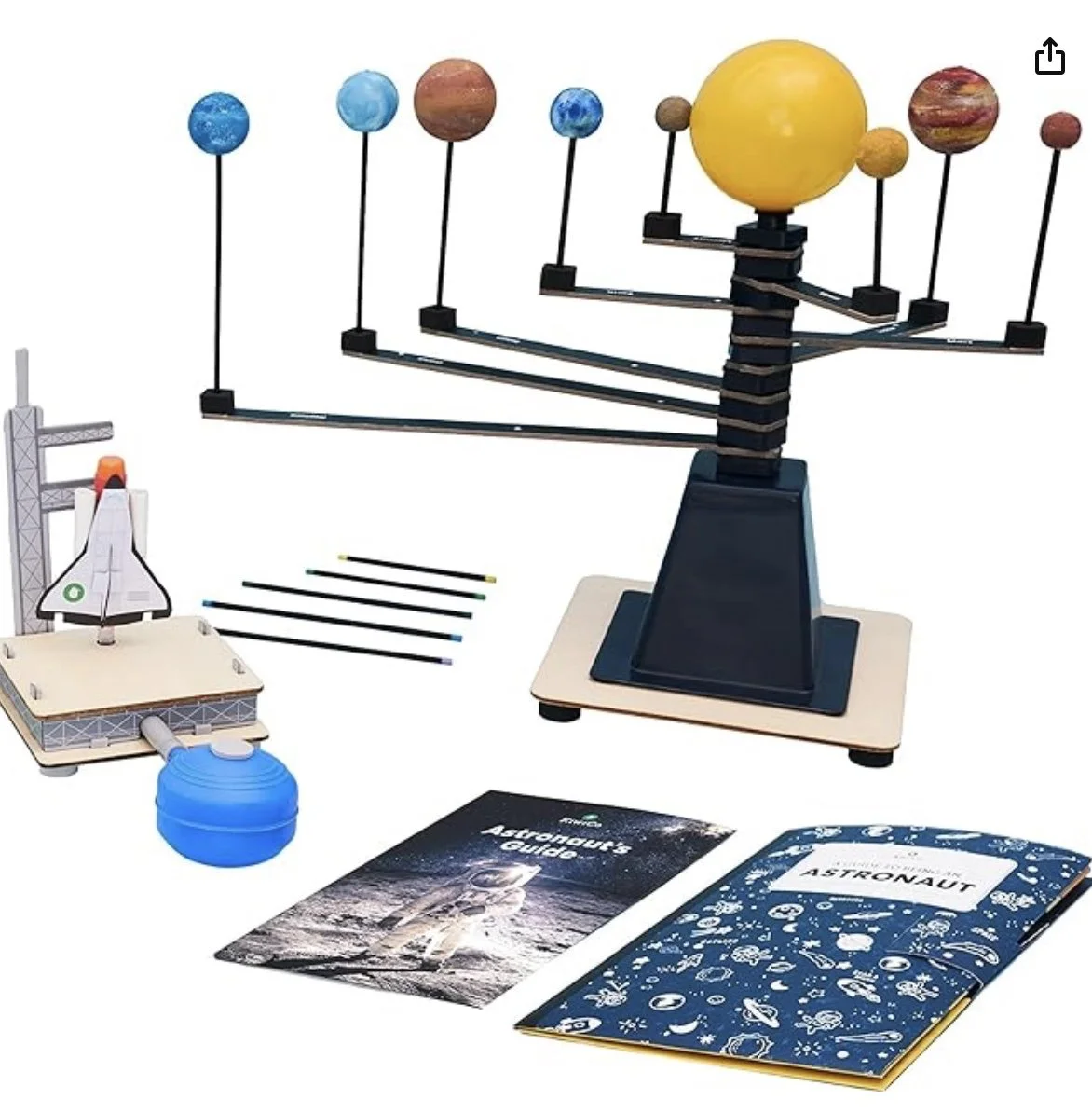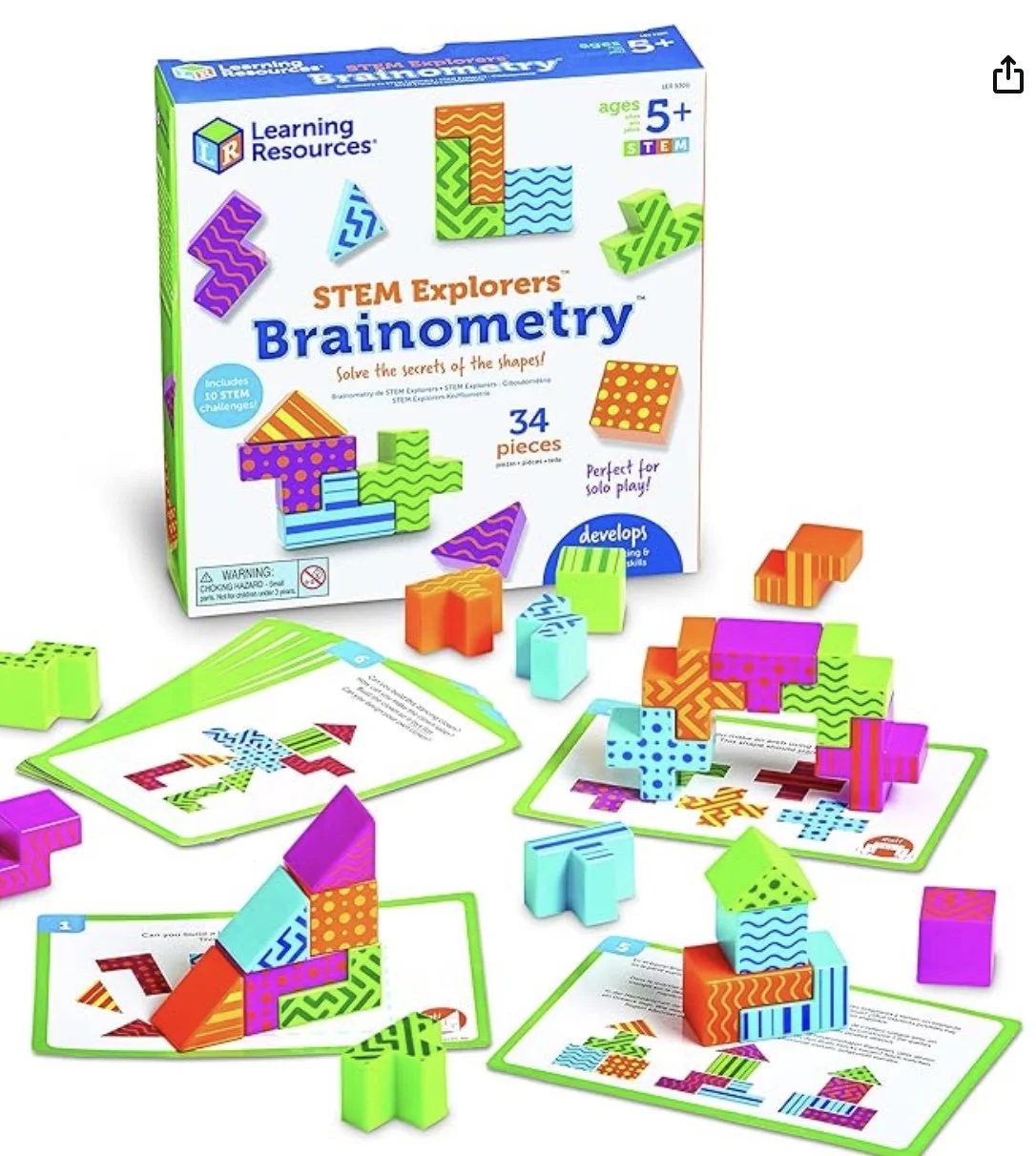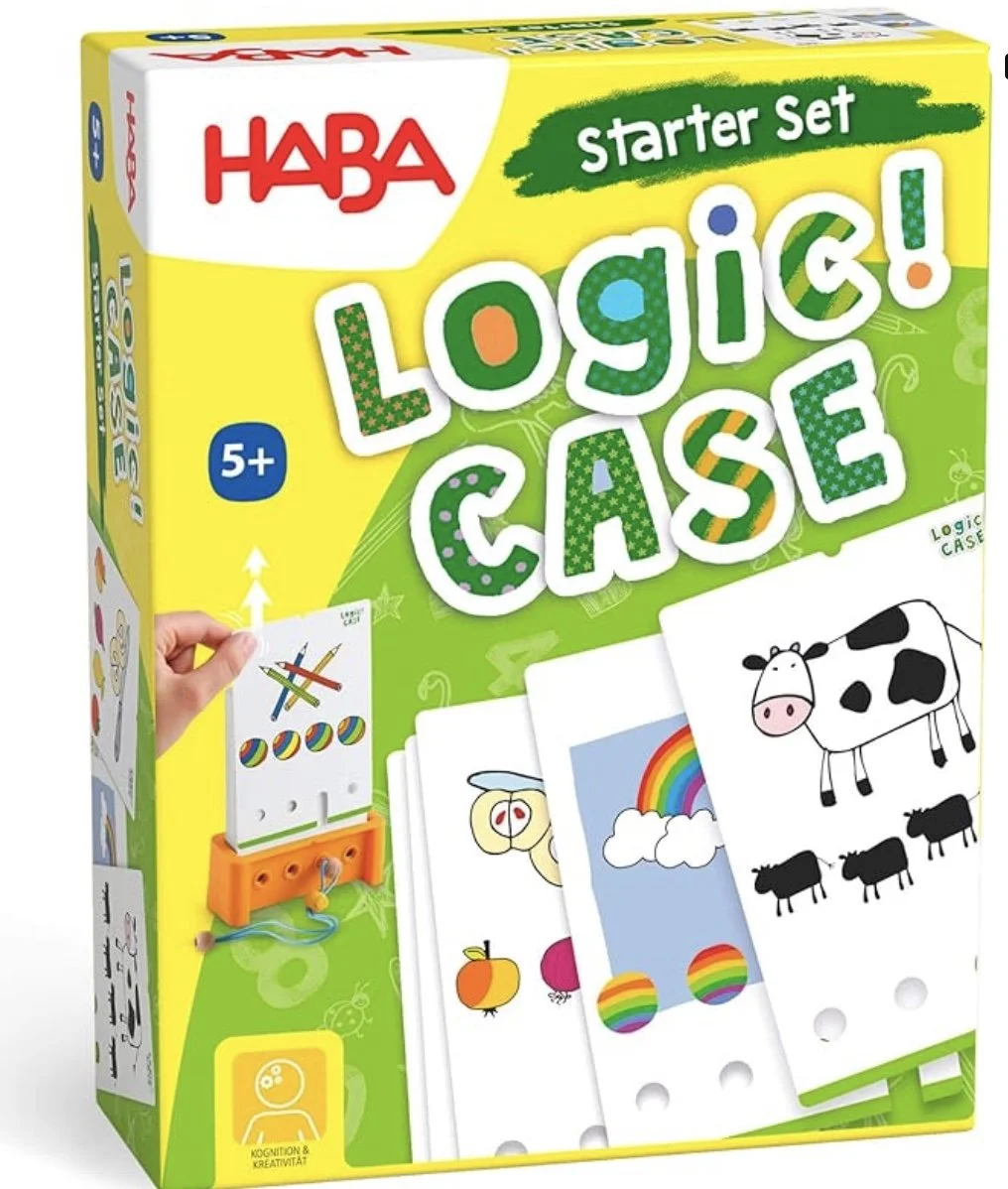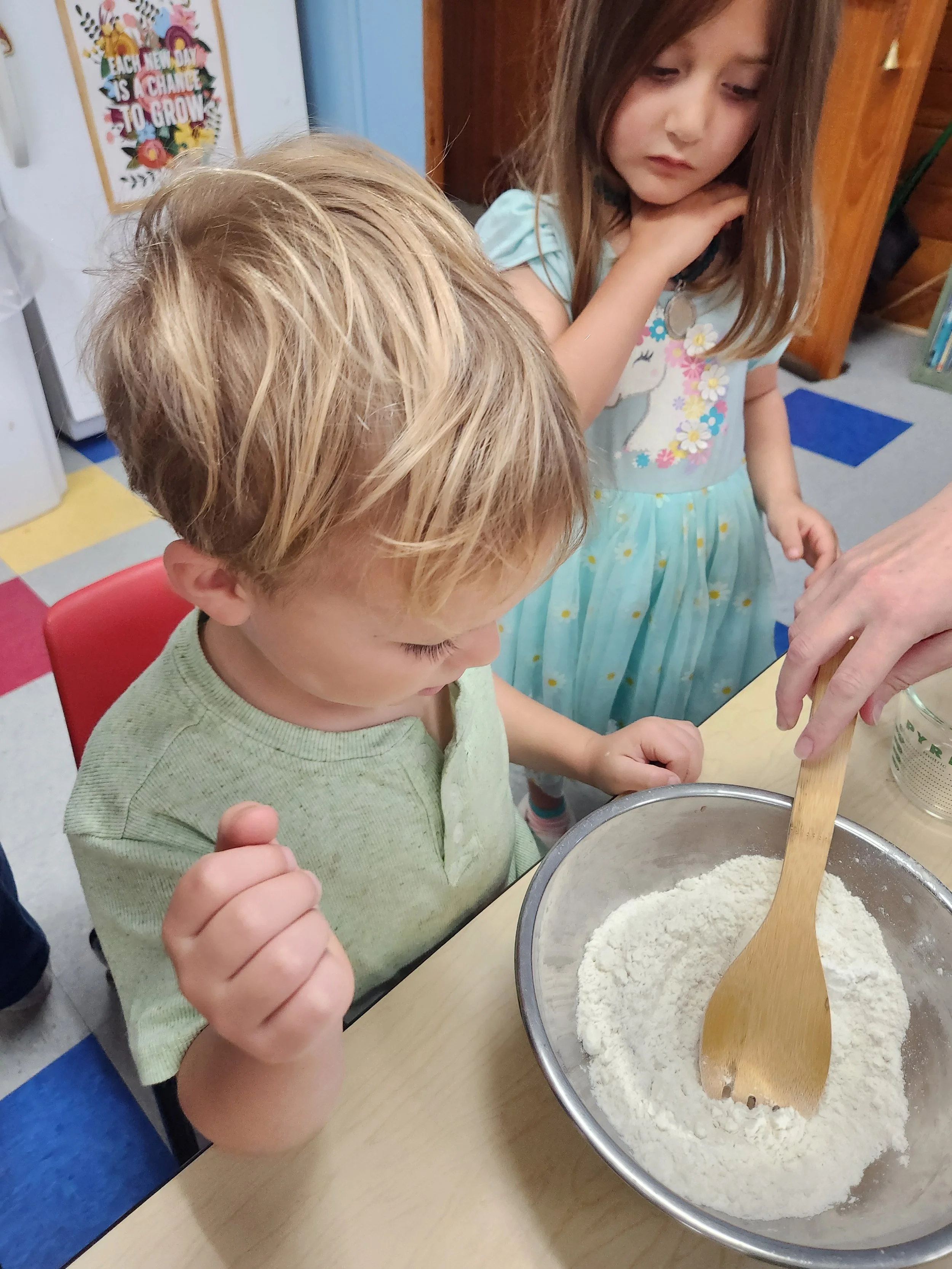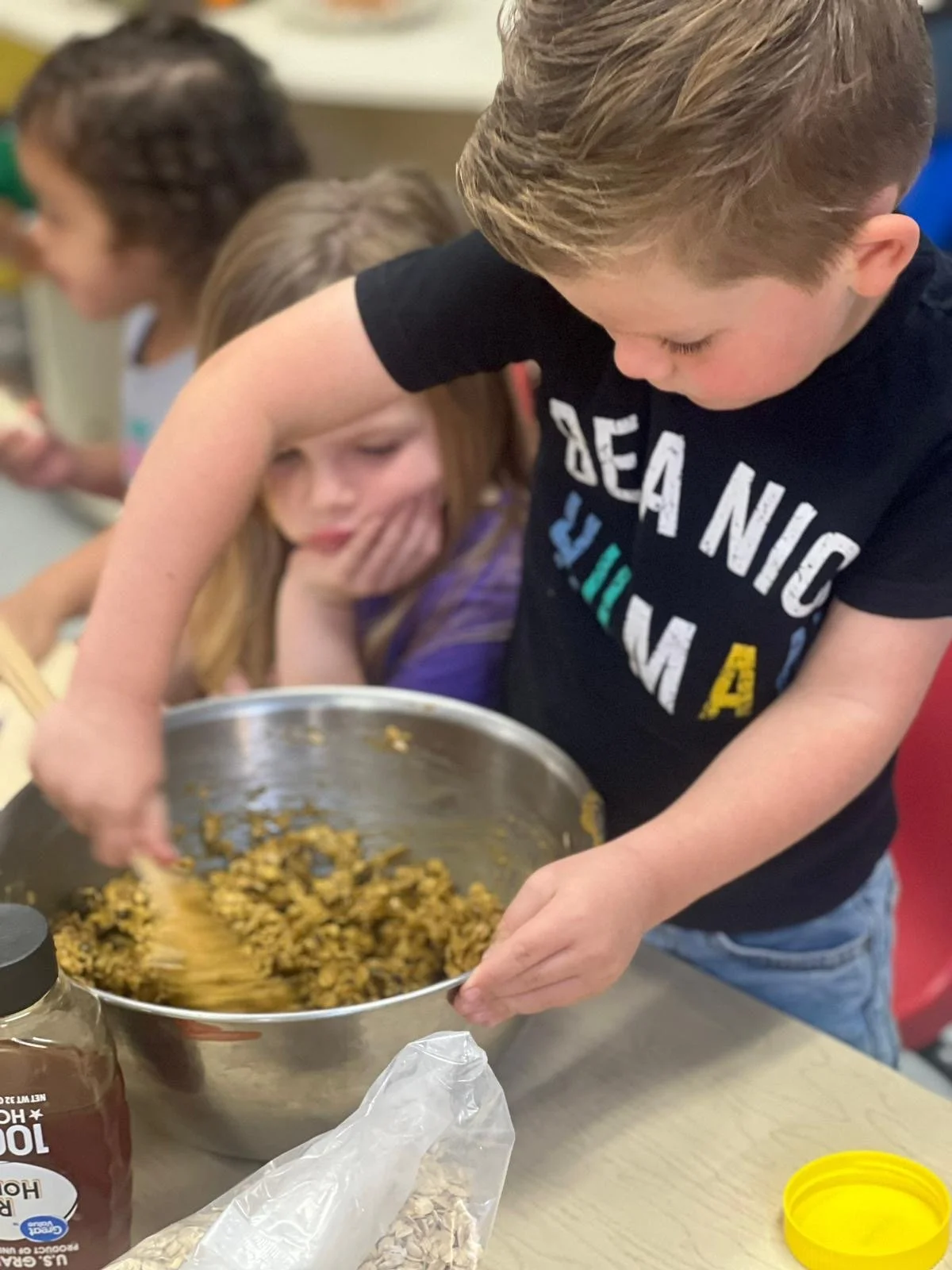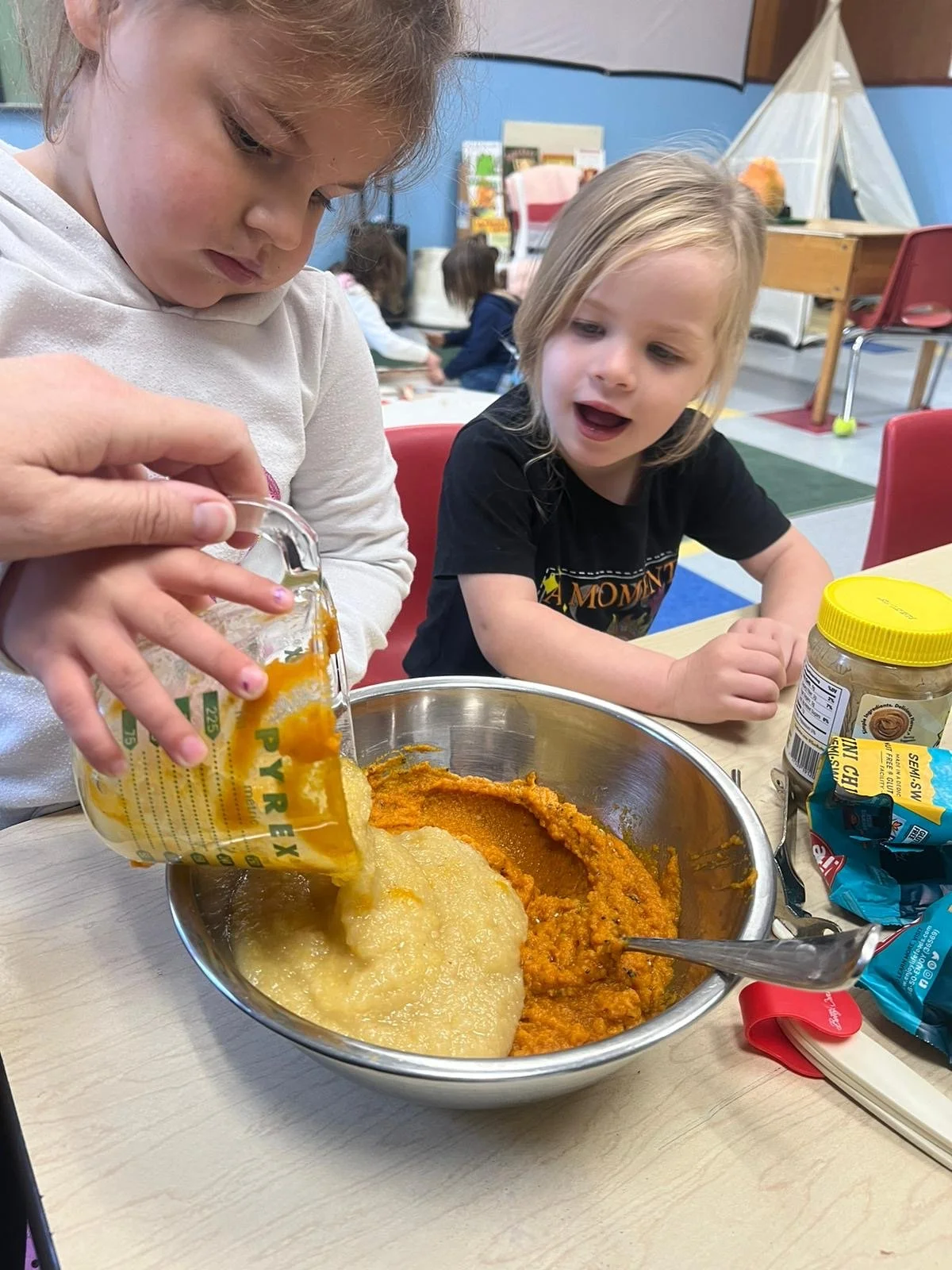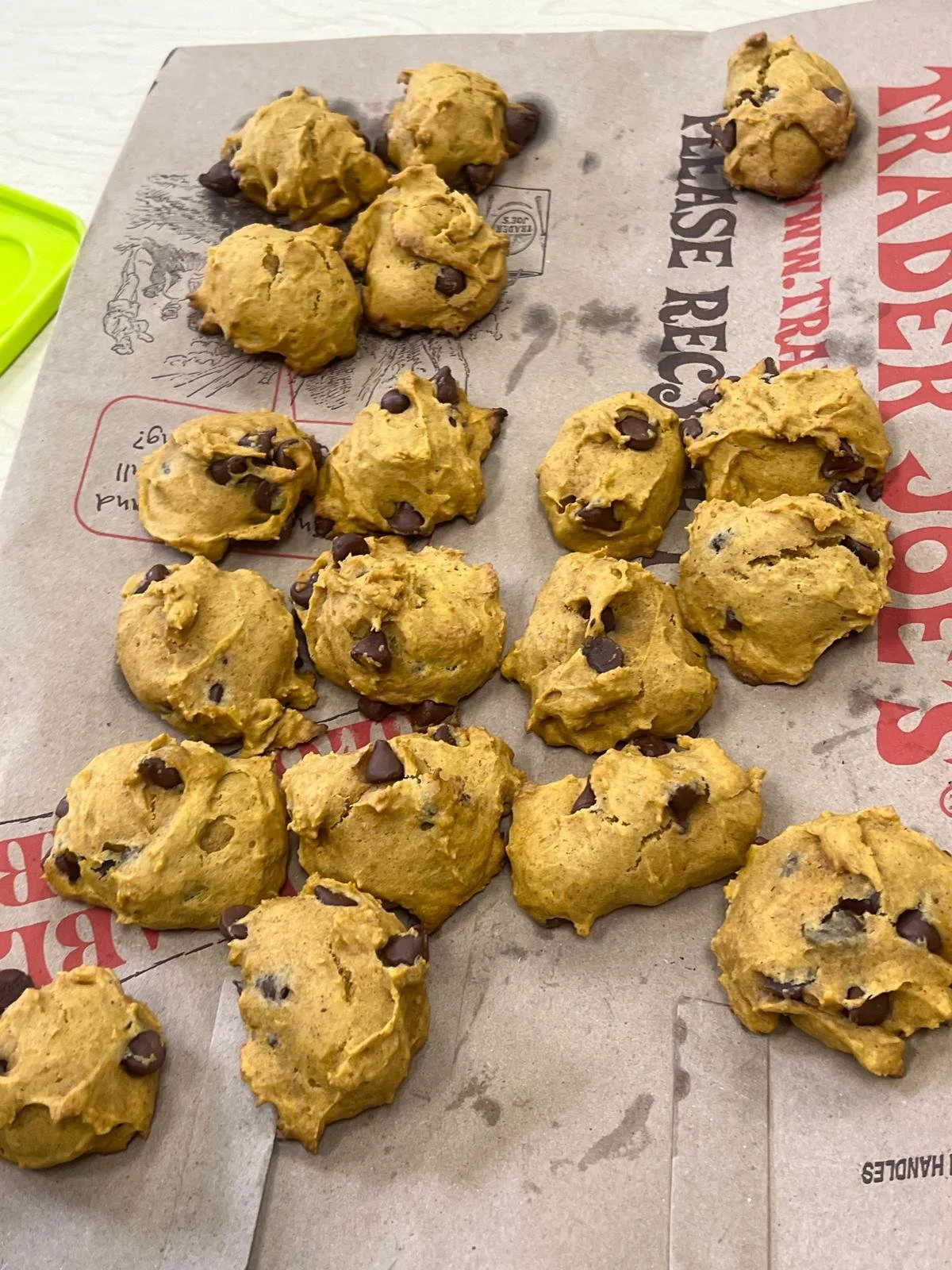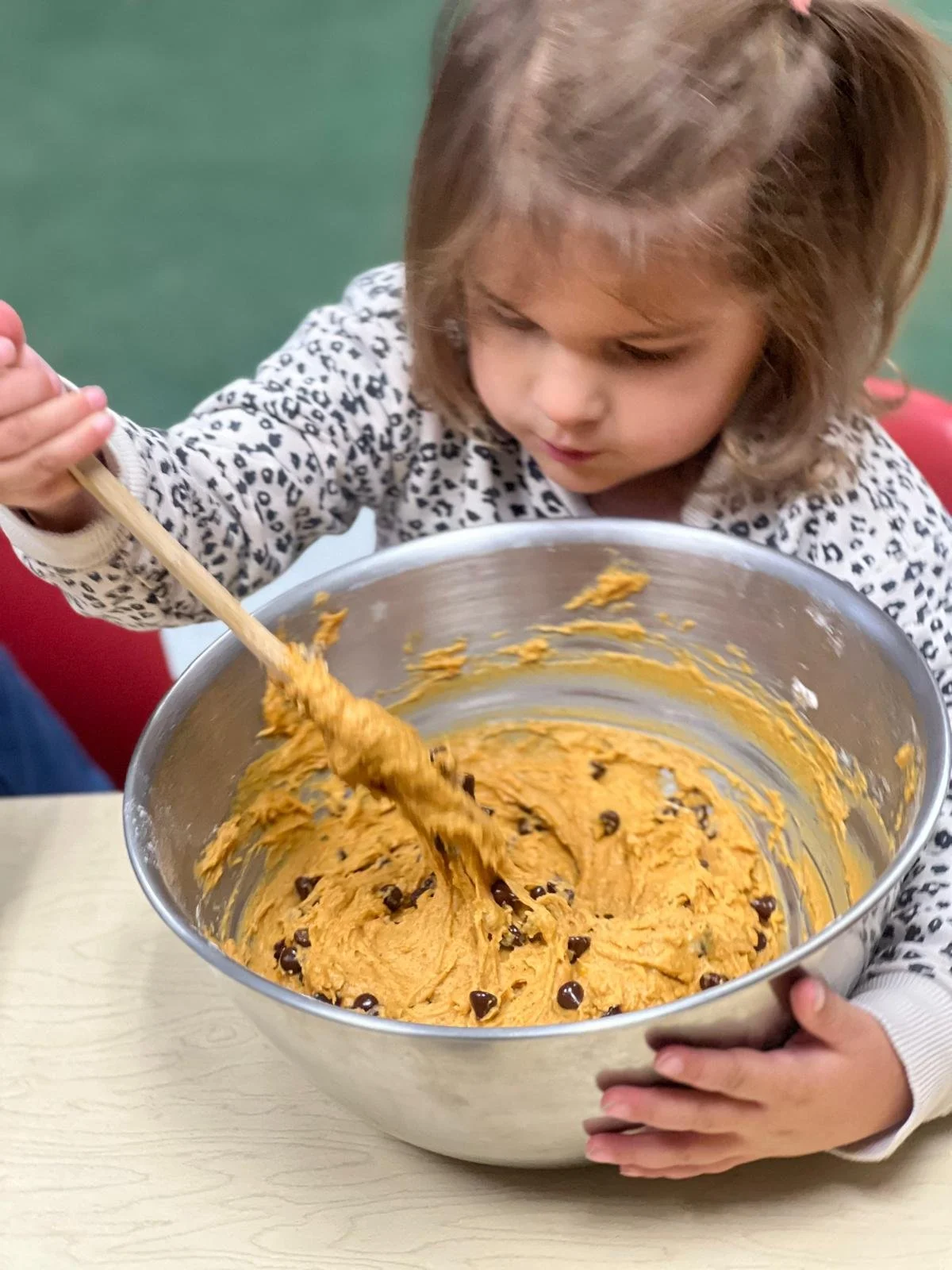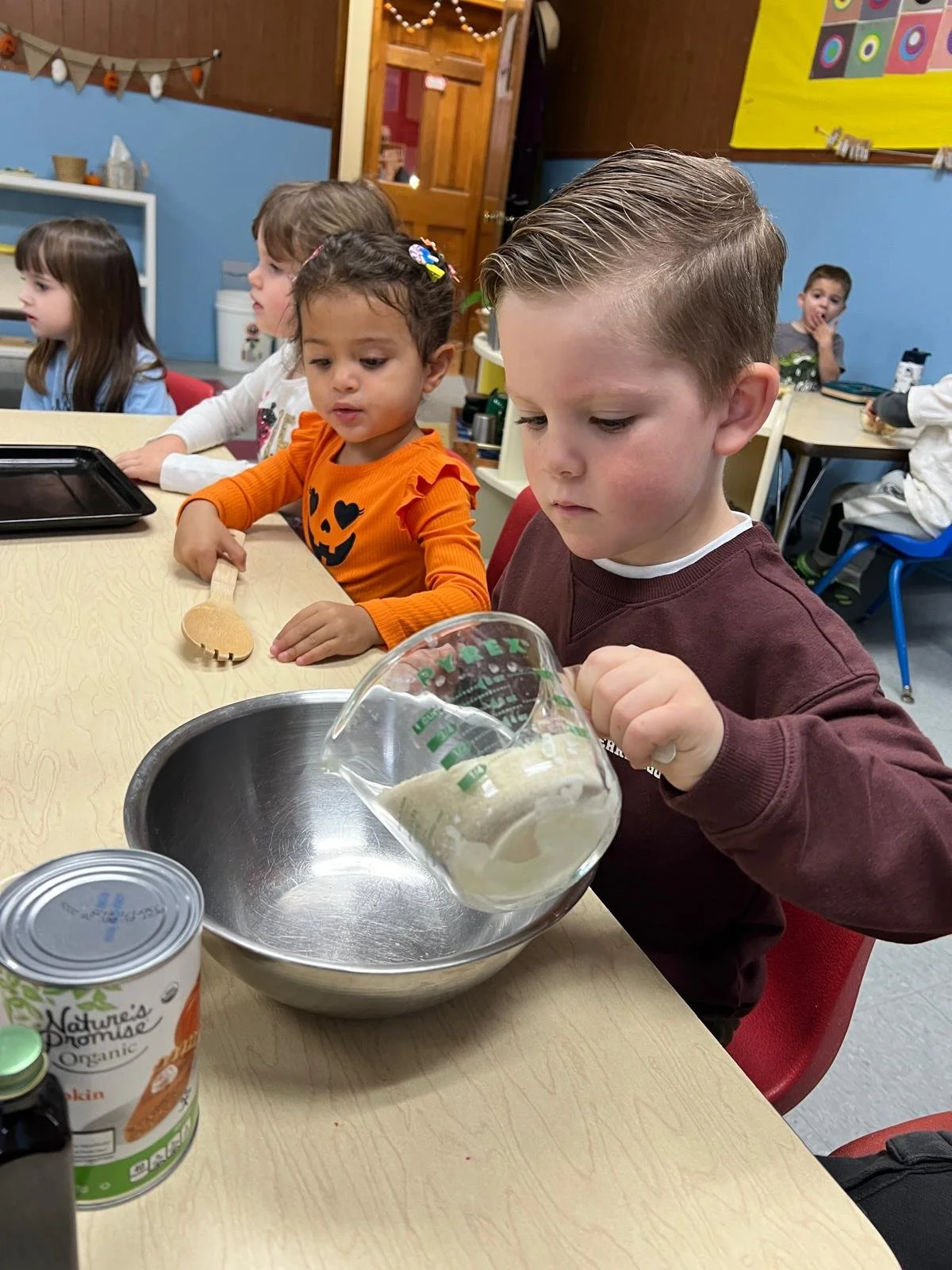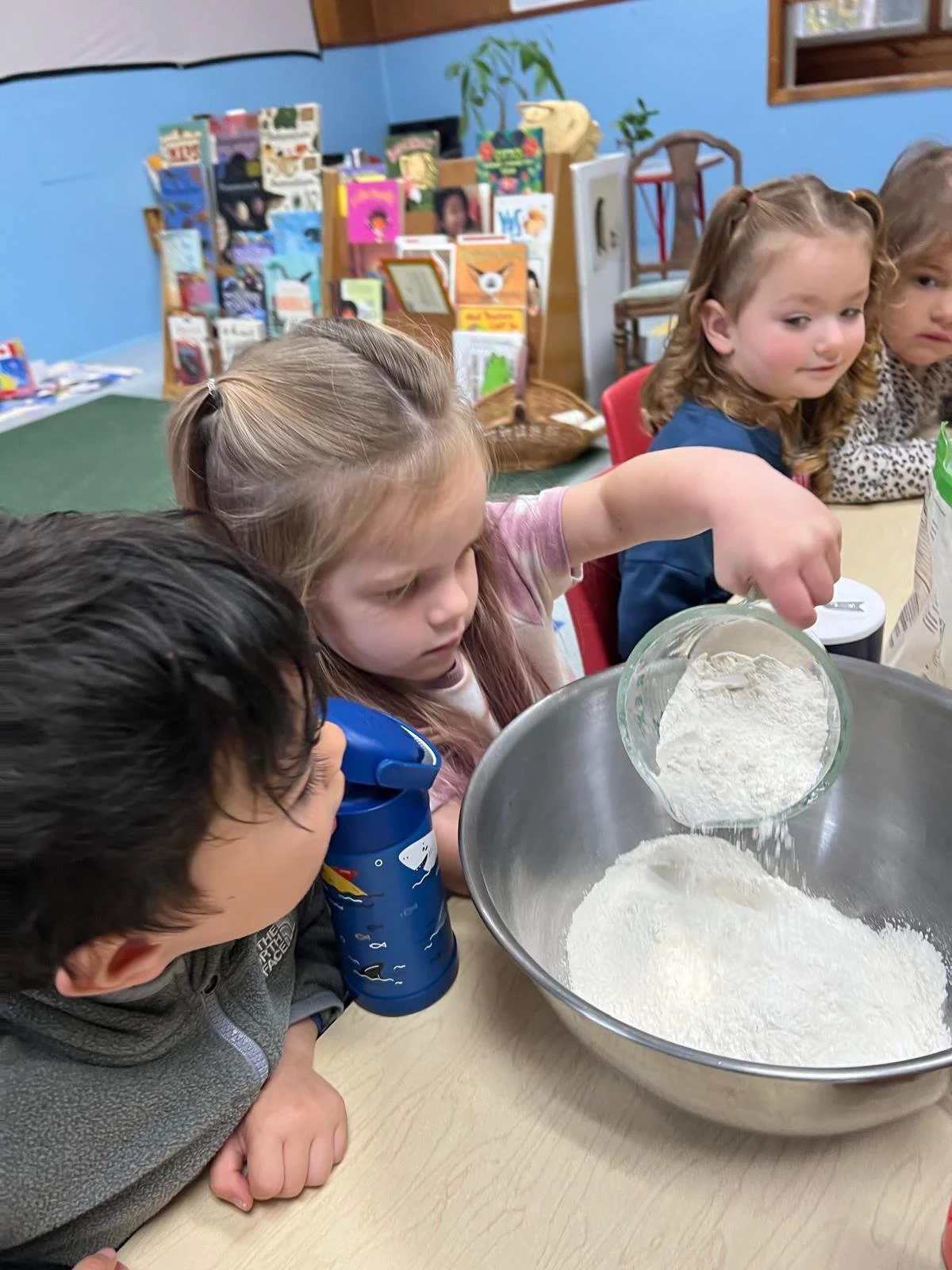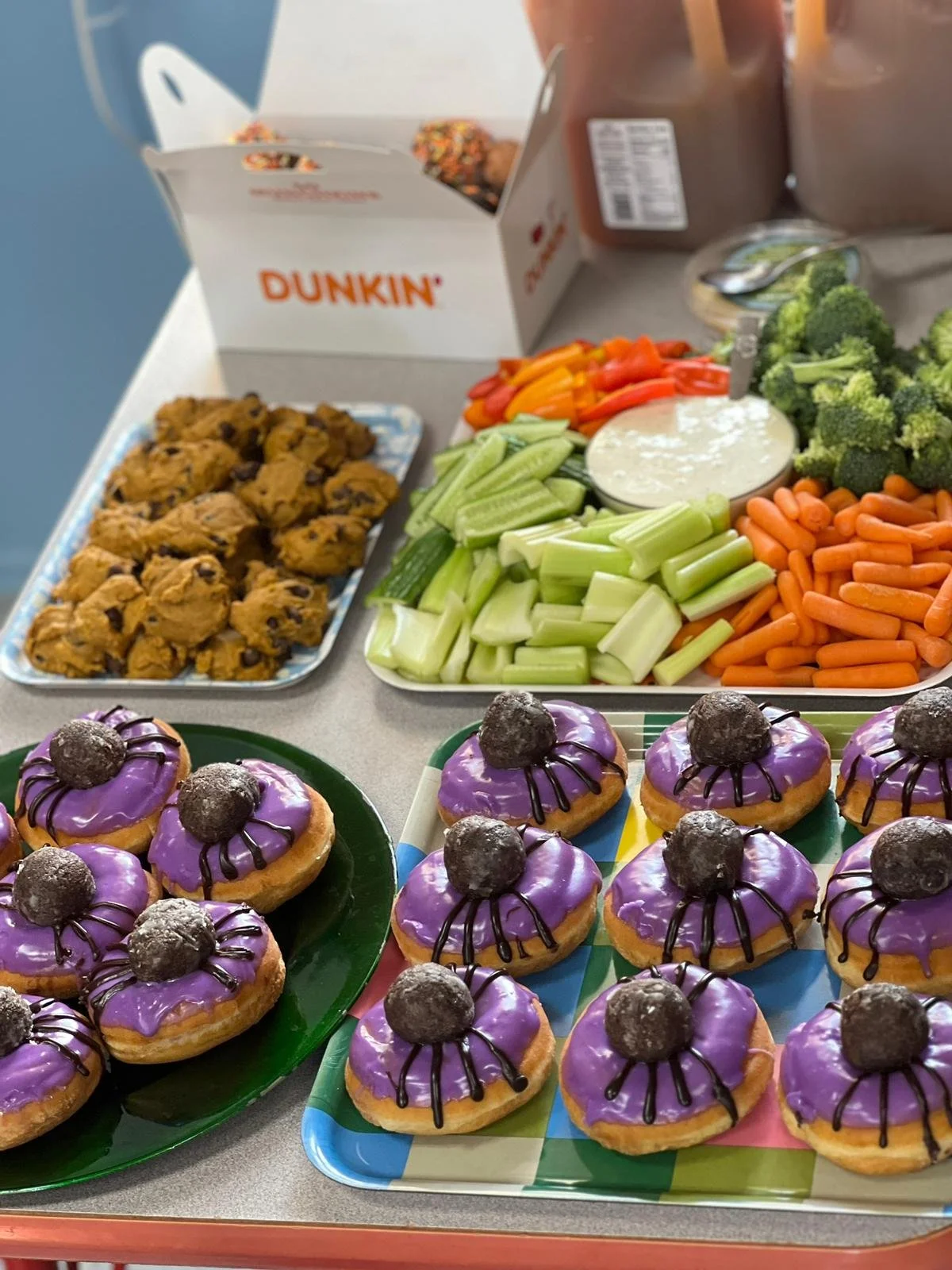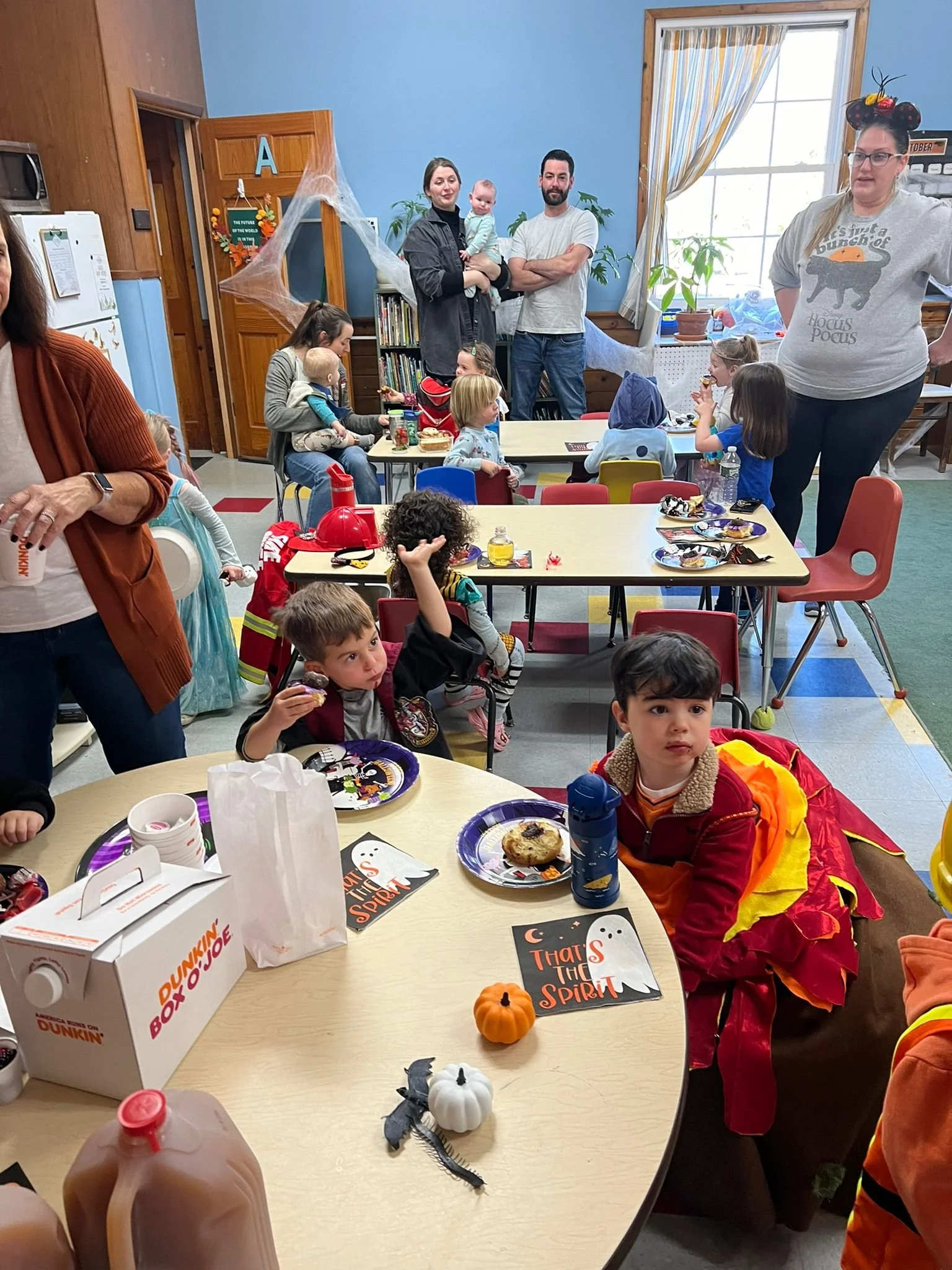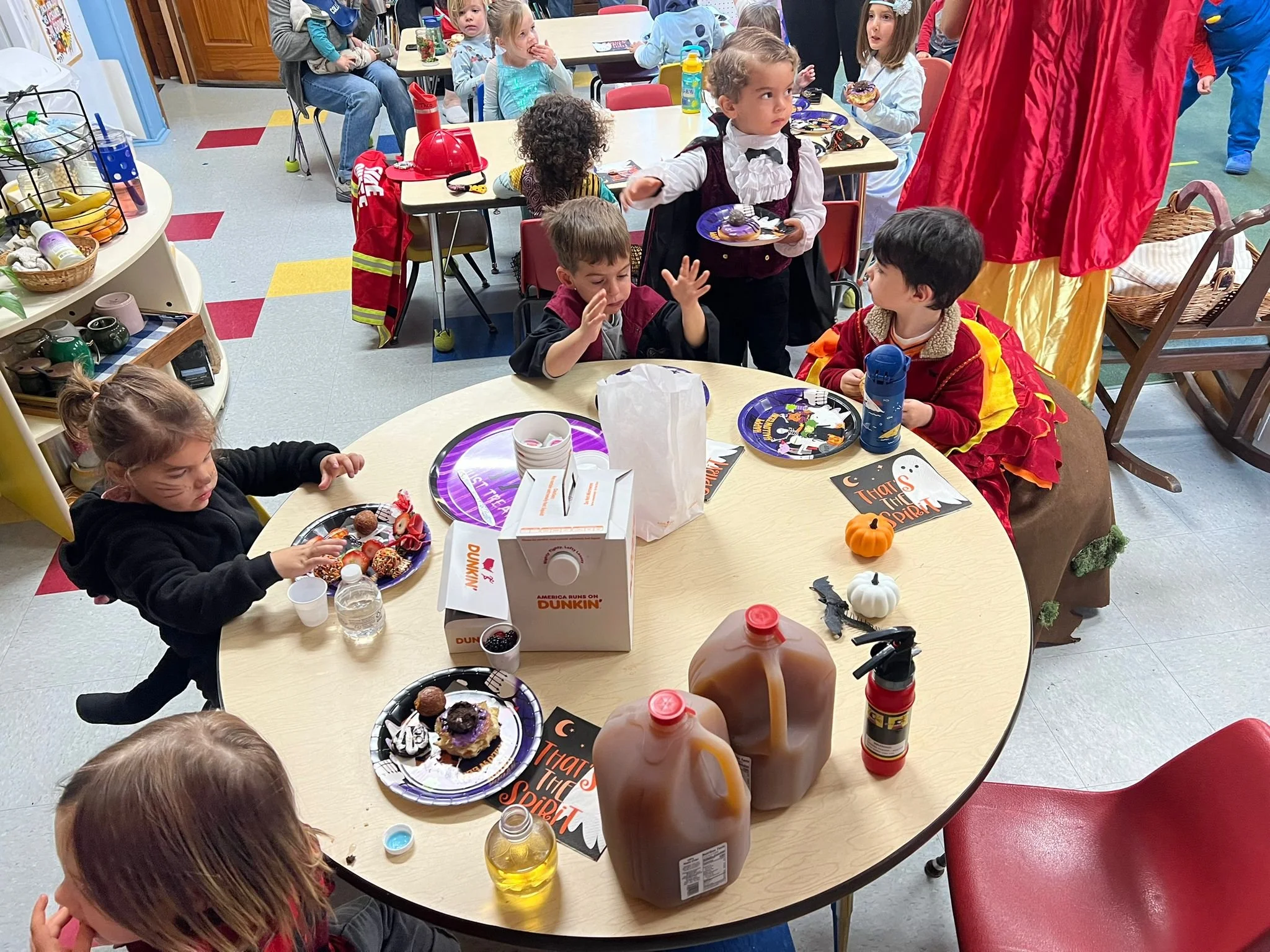Last Minute Montessori Gift Ideas
Looking for meaningful gifts that spark curiosity and learning? Montessori-inspired toys are simple, beautiful, and purposeful—encouraging children to explore, discover, and develop real-life skills through play. In this guide, you'll find thoughtfully chosen toys for every stage, from infants to 6-year-olds.
These gifts focus on engaging the senses, fostering independence, and growing with your child—because the best toys don’t just entertain, they teach.
Ready to make playtime more intentional? Let’s get started!
When choosing a toy for a child, Montessori principles guide us to look for gifts that are purposeful, beautiful, and engaging. Unlike toys that overwhelm with noise or flashing lights, Montessori-inspired toys focus on meaningful play—encouraging independence, exploration, and connection to the real world.
What makes a toy "Montessori-inspired"? First, it should have a real-world application or represent reality, helping children make sense of their environment. It should be self-correcting, allowing the child to recognize and learn from mistakes independently. Natural materials like wood, metal, fabric, and leather are preferred—not only for their sensory appeal but also for their durability and sustainability. These toys are simple in form yet rich in function, often engaging multiple senses: sight through beautiful colors, touch through varied textures, or hearing through soft, pleasing sounds.
A Montessori toy also grows with the child. Ideally, it can be used in multiple ways, staying relevant through different developmental stages. Practical life elements—like pouring, building, or sorting—help the child practice real skills that lead to independence. Above all, a Montessori-inspired toy invites interaction. It is something the child wants to pick up, explore, and learn from naturally.
Please note: This post contains affiliate links, which means Little Garden Montessori may earn a small commission at no extra cost to you if you make a purchase through these links. Thank you for your support!
0-6 Months: Exploring the World Through the Senses
At this stage, infants are absorbing everything around them like little sponges. They need toys that stimulate their senses in a gentle and engaging way. Objects with contrasting colors, soft textures, and pleasing sounds encourage visual, tactile, and auditory development. Simple toys that fit in tiny hands and can be grasped, felt, or mouthed are ideal. The goal is to invite exploration and build early motor skills.
Encourages Gross Motor skills development including grabbing. The dowels are smooth and light weight. The elastic bands are easy to grasp.
To begin with, this Activity Pad is truly beautiful and is inviting for any child. There are multiple different textures and items to keep your child interested and playing including teether, squeaker and more.
This supports visual development with high-contrast patterns that catch a baby’s eye. It encourages tummy time, helping strengthen arm and leg muscles for crawling, while the included teethers and soft book enhance hand-eye coordinationand early brain development through sensory exploration.
7-12 Months: Movement and Hand Control
Babies at this age are developing their ability to sit, crawl, and stand while honing their hand-eye coordination. Toys that encourage movement—like rolling balls, push toys, or stacking rings—support this phase. Simple cause-and-effect toys, like an object that makes a gentle sound when shaken, engage curiosity and problem-solving. This is the time to introduce toys that involve two hands working together or ones that encourage the baby to move after them.
Designed to promote cognitive development by demonstrating object permanence. The sound of the ball hitting the tray and rolling engages the child. There are three different styles of ball that will give the child three different experiences.
Rainbow Roller Rattle
This rolling rattle encourages movement. It has bright colors and a smooth texture with a pleasant sound when rolled or shaken.
This features soft textures, vibrant colors, and a lightweight design to encourage grasping, reaching, and gross motor skillslike rolling and crawling. Crinkly and smooth panels provide a fun, sensory exploration experience
13-18 Months: Refining Gross and Fine Motor Skills
This age is marked by growing mobility and an interest in manipulating objects. Toddlers benefit from toys that help refine both large movements (like walking or climbing) and smaller hand movements. Objects they can stack, fit together, or bang (e.g., pegboards, nesting cups, and musical instruments) help develop coordination. At this age, practical life tools—like small brooms or simple pouring work—also become engaging.
For early walkers, this helps with balance and coordination.
This puzzle includes three geometric shapes that help develop fine motor skills, pincer grasp, and hand-eye coordination.
19-24 Months: Independence and Imitation
Children in this stage are learning to imitate the adults around them and love to practice independence. Toys that reflect real-life tools—like a child-sized cleaning set, kitchen items, or a small watering can—are excellent choices. Simple puzzles and building materials also encourage problem-solving, while activities that require balance, like walking on a beam or pulling a wagon, support physical growth.
This introduces basic shapes—square, circle, and triangle—to support early learning, helping children build shape recognition, spatial awareness, and cognitive skills.
Threading the laces through the shapes helps children build fine motor control, hand-eye coordination, and dexterity. This activity also strengthens focus, problem-solving, and shape and color recognition, supporting overall cognitive development.
Whatever it is, the way you tell your story online can make all the difference.
2-3 Years: The Age of 'Doing It Myself'
At this age, children are fiercely independent and eager to do it themselves. They thrive with toys that involve practical life skills—like sweeping, cooking, or sorting. Early tools for pouring, scooping, or dressing (like button boards or zipper frames) provide real-world practice. Additionally, open-ended materials like blocks or simple art supplies encourage creativity and persistence.
This supports fine motor skills, concentration, and creativity through brush control and artistic exploration, while also promoting mindfulness, cause-and-effect learning, and self-regulation in a calming activity.
This supports fine motor skills, creativity, color recognition, early math, and focus, while encouraging coordination and imagination. From counting games to color sorting, these engaging tools offer thoughtful, hands-on learning.
This upports practical life skills like cleaning while developing fine motor control, cause-and-effect understanding, focus, and problem-solving. It also encourages imagination, independence, and responsibility through purposeful, hands-on play.
3-4 Years: Imaginative Play and Early Problem-Solving
The preschool years bring a new level of imagination and cognitive development. Children enjoy toys that allow them to build, pretend, and solve problems. Building materials, simple puzzles, and toys that require matching or sorting engage their growing reasoning skills. Practical life toys—like child-sized gardening tools or baking sets—help channel their love for imitating adults into real tasks.
supports spatial awareness, fine motor skills, and problem-solving as children fit each piece into place. It also fosters geographic awareness, concentration, and memory, helping children learn about the United States through hands-on exploration.
Figuring out how to unlock and unscrew components encourages logical thinking and problem-solving. Using the screwdriver and locks strengthens hand muscles, improves coordination, and refines the pincer grasp needed for writing.
BOB Books' step-by-step approach helps children build reading readiness. The Alphabet set introduces uppercase and lowercase letters, letter sounds, and word recognition, while the Pre-Reading Skills set uses engaging stories to teach spatial, relational, and sequencing concepts essential for independent reading.
4-5 Years: Refining Skills and Exploring Creativity
At this stage, children are refining their motor control, creativity, and early academic skills. Toys that involve fine motor work—, using child-safe tools, or puzzles with small pieces—are valuable. Creativity blossoms with open-ended toys like art materials, blocks, or pretend kitchen sets. Tools that introduce real-life skills, like child-safe knives for cutting fruit, are especially meaningful.
This five-layer human anatomy puzzle introduces children to the skeletal, muscular, and digestive systems through interactive, self-correcting play. Designed for small hands, it promotes fine motor skills, problem-solving, and body part recognition in a simple and engaging way.
This It strengthens fine motor skills and tactile discrimination as children match shapes by touch alone. This activity also enhances problem-solving, spatial awareness, and visual recognition as they pair shapes to tiles.
The Balance Board helps children aged 4-5 develop balance, coordination, and core strength. It supports self-regulation by providing a calming, rocking motion or an outlet for active energy, while encouraging focus, confidence, and physical play.
5-6 Years: Collaboration and Early Abstract Thinking
Older children begin to seek challenges and enjoy collaborative play. Toys that require strategy, sequencing, or problem-solving—like more complex puzzles, building sets, or early games—support this development. At this age, practical life work can become more advanced, like caring for plants, baking simple recipes, or building with tools. Children benefit from toys that invite focus and reward persistence.
This helps children aged 5-6 develop fine motor skills, spatial awareness, and problem-solving as they build and explore the planets. It fosters curiosity about space, supports early science learning, and encourages focus and patience through hands-on, engaging play.
This puzzle challenges kids to solve shape secrets while building critical thinking, problem-solving, and spatial reasoning skills. Through hands-on sorting and geometry challenges, it trains young minds to think logically and creatively.
The Logic! CASE Puzzle Sets engage children aged 5+ with 77 fun and colorful challenges that build pattern recognition, critical thinking, and problem-solving skills. Designed for independent play although they can be worked on as a team, these puzzles inspire focus, creativity, and out-of-the-box thinking.
We hope this guide helps make your holiday season a little more intentional, with gifts that bring joy, spark curiosity, and inspire meaningful play for the children in your life.
10 Tips to Keep Kids Seated at the Holiday Table
The holidays are a time for family, food, and celebration, but keeping young children engaged at the table can be a challenge. Whether you're hosting at home or visiting friends and family, mealtimes with little ones can be unpredictable. From getting them involved in the kitchen to creating a child-sized table, there are ways to help keep your child engaged. A coloring tablecloth, stickers, or simple games can provide entertainment while encouraging participation in the meal.
The holidays are a time for family, celebration, and good food, but keeping young children engaged and seated at the dinner table can be tricky. Whether you're hosting at home or visiting family and friends, mealtimes with little ones can be unpredictable. From involving them in the meal preparation to creating a space just for them, there are many ways to keep your child engaged and seated during dinner. Activities like coloring, stickers, or simple games can provide entertainment while encouraging participation in the meal.
Please note: This post contains affiliate links, which means Little Garden Montessori may earn a small commission at no extra cost to you if you make a purchase through these links. Thank you for your support!
1. Get Them Involved in the Kitchen
Before dinner, let your child help with age-appropriate tasks like stirring, decorating, or setting the table. Kids are more invested in meals they’ve helped create, and this builds excitement around the meal. They’ll be more likely to stay at the table and enjoy the food they had a hand in making.
Read our blog post Getting Kids in the Kitchen: An Interview with our Snack Coordinator for tips and tricks on how to successfully include your child in the holiday preparations.
2. Get Them Moving Beforehand
Allow children to run around or play outside before sitting down for dinner. Physical activity helps them release energy, making it easier for them to stay still and focused at the table. A quick burst of outdoor play can set the stage for a more peaceful mealtime.
3. Create a Kids' Table
In our classroom, as per the Montessori Philosophy, the environment is carefully prepared to support a child's independence and ability to engage meaningfully with their surroundings. The same concept applies when setting up a dinner table for children. By providing child-sized furniture and utensils, you create a space where children feel capable and in control, encouraging them to stay seated and participate in the meal.
“Nothing is gained by mere imitation or forced obedience; there must be inner preparation by which obedience becomes possible, and such preparation is indirect. Very clearly stands out the necessity for a prepared environment for children, and freedom wherein the soul can expand its powers.”
By thoughtfully preparing a child-centered space at the table, you allow children to feel empowered to engage and take ownership of the experience, just as they would in a Montessori classroom.
4. Coloring Tablecloth with Crayons or Markers
Transform the table into a creative space with a coloring tablecloth. Let kids get creative with crayons or markers while staying seated. For younger children, try larger, triangular crayons that are easier to hold and less likely to break.
Buy on Amazon: Disposable Holiday Themed Coloring Tablecloth , Triangular Crayons, Starter Palm Grip Crayons
5. Stickers for Creativity
Stickers are a simple and inexpensive way to keep children entertained. You can get holiday-themed stickers and let kids decorate their paper with stickers and crayons. Younger kids will love the simple task of sticking them on paper, while older children can turn it into a full art project.
Buy on Amazon: Holiday Puffy Stickers
6. Coloring Books or Pages
Bring out some holiday-themed coloring books or print out pages from the internet. Coloring is a great way to keep children occupied and calm, allowing them to take breaks from the conversation and relax while still staying engaged.
Check these out: Free Crayola Holiday inspired Coloring Pages
7. Pass the Drawing
A fun and interactive activity, Pass the Drawing allows everyone to add to a picture. Each person draws for a minute, then passes the paper around the table. It’s an easy way to keep kids involved and spark some creativity.
8. Simple, Age-Appropriate Games
Games like Go Fish, Spot it, or Tic Tac Toe are perfect for short bursts of fun. These games help kids focus, stay entertained, and interact with others, all while not requiring much space or preparation.
Buy on Amazon:
BenBen Go Fish Card Came for Kids
Zygomatic Spot It! Disney Card Game
9. Holiday-Themed I Spy
Create a holiday version of I Spy by hiding themed items around the room or on the table. This keeps children actively engaged and gives them something fun to focus on during the meal.
10. Magnetic Tiles or Magnetic Blocks
Set up magnetic tiles or magnetic blocks for hands-on fun. Kids can build structures, create shapes, or just play with the pieces, all while staying seated and calm.
Buy on Amazon:
CreateOn Crayola Holiday Glitter Magnetic Tiles
And Remember…
Even with these strategies, it’s important to manage expectations. The holidays can be overwhelming for young children—there’s a lot going on, and their routine is disrupted. It’s completely normal for kids to get fidgety and need breaks.
Attention Span of Children Aged 2 to 6
Young children have relatively short attention spans, especially when it comes to less engaging activities like mealtime. While this can vary from child to child, research shows that kids between the ages of 2 to 6 generally have an attention span of about 2 to 5 minutes per year of their age. So, a 2-year-old might be able to sit for 4 to 10 minutes, a 3-year-old might make it 6 to 15 minutes, and a 5-year-old could sit for 10 to 25 minutes.
But here's the thing: attention span isn’t set in stone. It’s elastic and can vary from child to child—and from moment to moment. Factors like whether the child is tired, has just woken up from a nap, or is about to go down for one can all play a role. Even the time of day matters. Morning energy might allow for more sitting, while after a long day, even the best-prepared kids might need a break.
So, while the numbers above give a general idea, try not to stress if your child gets up or isn’t quite ready to stay seated. It’s all part of the process, and it's okay if things don’t go as planned. Parenting is a journey, and sometimes mealtime can be a little unpredictable. Be gentle with yourself—things never go perfectly, and that’s okay. The holidays are about connecting with family and friends, having fun, and feeling grateful for the moments we share. Whether your child snubs their nose at your grandmother’s famous mashed potatoes, or turns away from the rich, golden turkey they’ve loved in years past, it’s all part of the experience. The best moments often come from the unexpected, and that’s what makes the holidays memorable.
By incorporating these fun activities and keeping expectations realistic, you can help ensure a smooth and enjoyable holiday season for everyone.
Happy Holidays!
-The LGM Family
7 Books to Inspire Gratitude This Thanksgiving—and Ways to Keep the Conversation Going
We all know how powerful gratitude can be. Science tells us that practicing thankfulness boosts happiness and strengthens relationships, and we see its impact in our own daily lives. But explaining these big ideas to young children can be tricky. That’s where books come in—not just to help children understand gratitude, acceptance, and love, but to remind us, as parents, to embody these values in our day-to-day lives.
At Little Garden Montessori, we’ve been focusing on these themes throughout November, weaving them into our classroom discussions and activities. From talking about what it means to be a good friend to noticing the beauty in small moments, the children are exploring gratitude, community, and love in hands-on, age-appropriate ways. We’re encouraging them to think deeply about kindness and connection—both within their classroom community and in the world around them.
The books below are wonderful tools for continuing these conversations at home. We’ve also included simple ways to extend those discussions beyond storytime, helping your child connect with the spirit of gratitude and giving your family opportunities to reflect together.
This post contains affiliate links. As an Amazon Associate, we earn from qualifying purchases. Thank you for supporting Little Garden Montessori.
by Mo Willems
This playful and heartfelt book is the perfect way to show children how much fun it can be to say “thank you.” As Gerald and Piggie set out to thank everyone who has impacted their lives, readers are reminded that gratitude can be shared in big and small ways.
Extend the Conversation: After reading, ask your child who they might want to thank and why. Write a thank-you note or draw a picture together to show their appreciation for someone special.
by Greg Foley
Bear’s simple yet heartfelt gesture for Mouse reminds readers that gratitude doesn’t need to be grand—it just needs to come from the heart. This story beautifully illustrates the joy of giving and the value of friendships.
Extend the Conversation: Ask your child what small thing they could do for someone they care about. It might be sharing a toy, giving a hug, or helping set the table.
by Kate DePalma
This beautifully illustrated book showcases gratitude traditions from cultures across the globe. From festivals of light to harvest celebrations, children learn how different communities give thanks in unique ways while emphasizing shared human values.
Extend the Conversation: Share with your child a tradition from your own family or culture that celebrates gratitude. Then, brainstorm together a new family ritual to express thankfulness, such as a weekly “thank-you” circle.
by Margaret Sutherland
This simple, relatable book highlights everyday things to be thankful for, from friends to pets and everything in between. Its child-centered perspective makes it perfect for preschoolers.
Extend the Conversation: Try the “two things” activity: ask your child to name two things they are thankful for that aren’t obvious (e.g., instead of “my toys,” it might be “the way my blocks stack so high”). Then share your two things to model thoughtful gratitude.
by David Milgrim
Through a little girl’s journey of noticing beauty in the everyday, this story teaches children to appreciate the small wonders around them, from nature to the kindness of others.
Extend the Conversation: Take a gratitude walk with your child. Look for things to be thankful for in your surroundings—a colorful leaf, a kind neighbor, or the crisp fall air.
by Amy Krouse Rosenthal
Spoon’s journey to self-acceptance teaches children that everyone has unique gifts to offer. It’s a gentle reminder to be thankful for our individuality and the roles we play in our communities.
Extend the Conversation: Discuss with your child one thing they like about themselves and one thing they appreciate about a friend. Use this as an opportunity to celebrate their unique qualities.
by Mem Fox
This poignant book emphasizes love and acceptance across cultures and communities, showing that our similarities far outweigh our differences. It’s a moving reminder of the connections that unite us.
Extend the Conversation: Share with your child one thing you are thankful for about someone in your community, like a neighbor or teacher. Then, help your child think of someone they appreciate in their life.
Honorable Mention:
Consider adding Bear Says Thanks by Karma Wilson to your reading list. This sweet story follows Bear as he hosts a feast for his friends, showing the joy of gathering and giving thanks together.
Getting Kids in the Kitchen: An Interview with our Snack Coordinator
In the Montessori approach, the kitchen is more than just a place to prepare meals—it’s an environment rich with learning opportunities. But let’s be honest: the idea of cooking with kids can feel daunting, and sometimes it even tests our patience. However, the benefits of bringing children into the kitchen—from nurturing independence and fine motor skills to sparking curiosity—certainly outweigh the frustration. With a few Montessori-inspired tips and thoughtful preparation, cooking with your little one can become a rewarding, joyful experience. To help ease the process, we spoke with Lindsay, who leads snack and meal preparation at Little Garden Montessori. She shares her advice on making cooking safe, fun, and educational for toddlers and preschoolers. Plus, don’t miss this month’s kid-friendly recipe, Dairy-Free ChocolateChip Pumpkin Cookies, perfect for little chefs to help create!
1. What are some simple, safe tasks kids can start with in the kitchen?
Lindsay: Some simple and safe tasks kids can start with include cutting or chopping fruits and veggies (using kid-safe knives), stirring ingredients, measuring, and peeling. These activities build fine motor skills and improve hand-eye coordination, making them perfect for young helpers.
2. What do you look for in a recipe to make it kid-friendly for cooking together?
Lindsay: When choosing recipes to make with kids, I look for ones that are easy to follow and fun. Healthy recipes are a priority, but I also like to choose dishes that look appealing to children so they’re excited to try what they made.
3. What utensils or tools do you find easiest for kids to use?
Lindsay: Kid-safe knives are great for cutting softer fruits and vegetables. They help kids feel more involved and capable. The more they practice, the more skilled they become, and that sense of accomplishment is so rewarding for them!
4. Are there steps you have younger children (ages 2.75 to 3) do versus steps for older children (ages 4 to 6)?
Lindsay: Yes, I definitely adjust tasks based on age and experience. For younger children, I often start with measuring, pouring, and stirring ingredients. Older children who have used a knife before can handle cutting tasks, always with supervision, of course.
5. How do you introduce kids to kitchen tools and utensils in a safe way?
Lindsay: Many of our children have some exposure to tools like peelers and knives at home, or even in our classroom through our apple and orange peeling activities. This familiarity helps, but we always introduce tools carefully and model safe use to build confidence.
6. What are some quick tips to prepare the kitchen space before cooking with kids?
Lindsay: Preparation is key. I like to make sure all ingredients and utensils are set out before starting. Kids are usually eager to dive right in, so having everything ready helps keep the flow and keeps them focused on the tasks.
7. Do you have any tricks to keep kids engaged and focused during cooking?
Lindsay: Talking through each step as we go keeps them engaged. I explain what we’re doing and why, from the beginning to the end. They’re usually so excited to see the finished result of their work, and that excitement often keeps them focused.
8. How do you handle situations where a child doesn’t want to participate or finds a task difficult?
Lindsay: Cooking should be fun, so if a child isn’t interested, I let them opt out. Some kids enjoy the process, while others are more interested in tasting the final product. If they’re struggling with a task, I encourage them to keep trying because practice really helps them improve. Usually, they’re willing to keep at it until they succeed.
9. What is one piece of advice you would give to parents who want to start cooking with their kids?
Lindsay: It’s such a valuable experience! Cooking with kids supports their motor skills, language development, self-esteem, and sense of responsibility. Plus, it fosters healthy eating habits and creates special bonding time.
10. What’s one way to make cleanup easier with kids in the kitchen?
Lindsay: Get them involved in cleanup by assigning tasks they can handle. When kids feel responsible for their “kitchen duties,” they often take pride in helping tidy up. Simple tasks like wiping surfaces or putting away ingredients can make a big difference.
Cooking with children can be an enriching experience that builds skills and creates memories. With Lindsay’s insights, hopefully you feel inspired to let your little one join you in the kitchen. Remember, the goal isn’t perfection—it’s the experience and time spent together that matter most. Happy cooking, and don’t forget to check out this month’s recipe for Dairy-Free Chocolate Chip Pumpkin Cookies, a delicious, kid-friendly treat to make together!
Do you have questions about getting your kids into the kitchen or bringing Montessori principles into your home? We’d love to hear from you—please leave your thoughts and questions in the comments below!
Bee Inspired: Seasonal Snacks from the LGM Kitchen
Delicious and completely dairy free Pumpkin Chocolate Chip Cookies. One of the kid’s favorite treats this Fall at Little Garden.
Dairy-Free Chocolate Chip Pumpkin Cookies
Makes 30 Cookies
The kids and teachers couldn’t get enough of these.
Invite your kids to join you in the kitchen! Not only is it a wonderful opportunity for bonding, but it also helps them develop essential skills.
Ingredients
1 cup granulated sugar
1 cup pumpkin puree
1/2 cup neutral cooking oil
1 tsp vanilla
1 large egg (or egg substitute if making vegan)
2 cups AP flour
1 tsp cinnamon
1 tsp baking soda
2 tsp baking powder
1/2 tsp salt
1 tsp almond milk
1 cup vegan semi-sweet chocolate chips
Directions:
PrPreheat the Oven: Preheat your oven to 375°F (190°C). Prepare a baking sheet by lining it with parchment paper or spraying it lightly to prevent sticking.
Mix the Wet Ingredients: In a large bowl, combine the granulated sugar, pumpkin puree, cooking oil, egg (or egg substitute), and vanilla extract. This is a great step for your kids to help with! Mixing in a bowl helps them develop hand strength, patience, and fine motor control.
Combine the Dry Ingredients: In a separate bowl, whisk together the all-purpose flour, cinnamon, baking powder, and salt until well blended.
Activate the Baking Soda: In a smaller bowl, mix the almond milk with the baking soda, ensuring it dissolves completely. This step adds a nice lift to your cookies!
Combine Ingredients: Gradually add the dry ingredients to the wet mixture, along with the activated baking soda mixture. Mix until just combined to avoid overworking the gluten, which can make the cookies tough.
Fold in Chocolate Chips: Gently fold in the vegan chocolate chips, ensuring they are evenly distributed throughout the batter.
Scoop and Bake: Using a tablespoon-sized scoop, place generous portions of dough (about 1.5 to 2 tablespoons per cookie) onto your prepared baking sheet, leaving space between each cookie. Bake in the preheated oven for 10-12 minutes, or until the edges are lightly golden.
Cool and Enjoy: Let the cookies cool slightly on the baking sheet before transferring them to a wire rack (or a paper bag, if you’re feeling playful) to cool completely.
Most Important Part:
Share and Savor
Once your cookies are cool, gather your family for a cozy tasting session. Share the warm cookies, enjoy the flavors together, and make some sweet memories! We shared them with our families at this year’s Halloween Party this past Wednesday.



